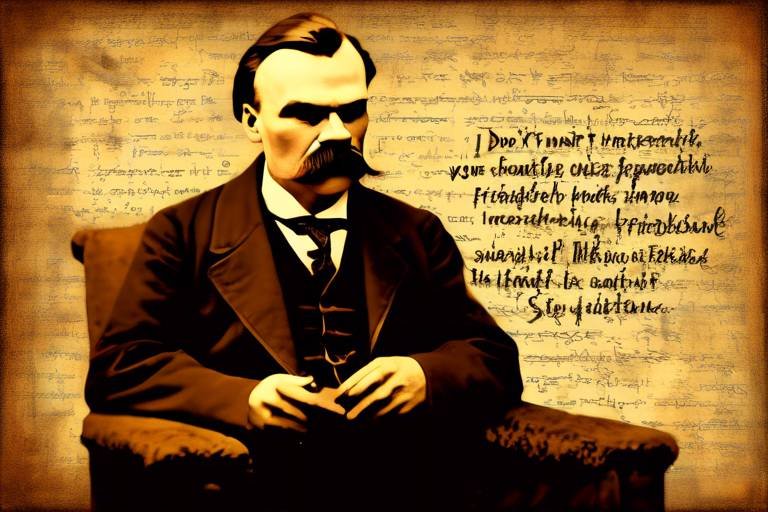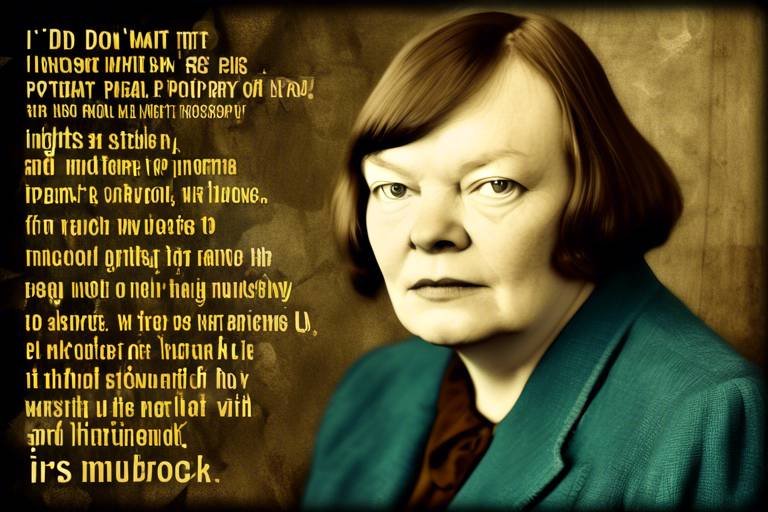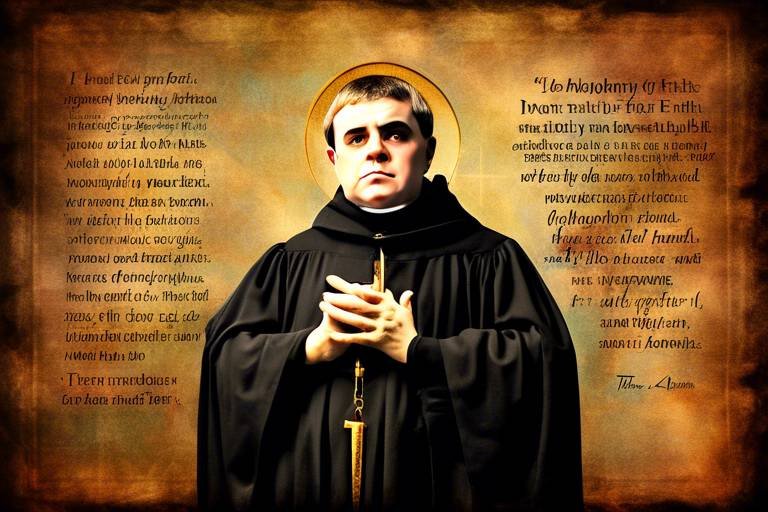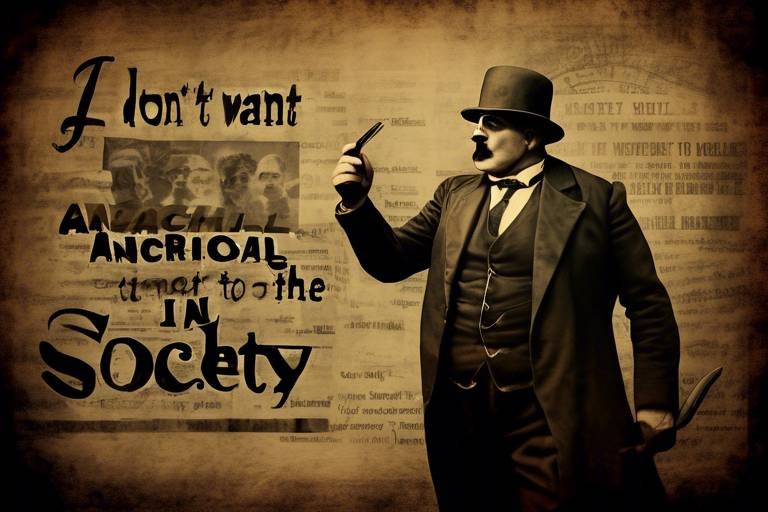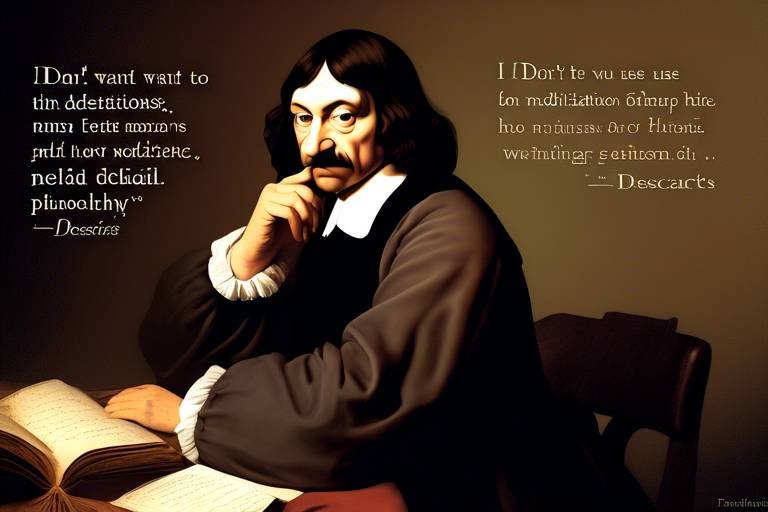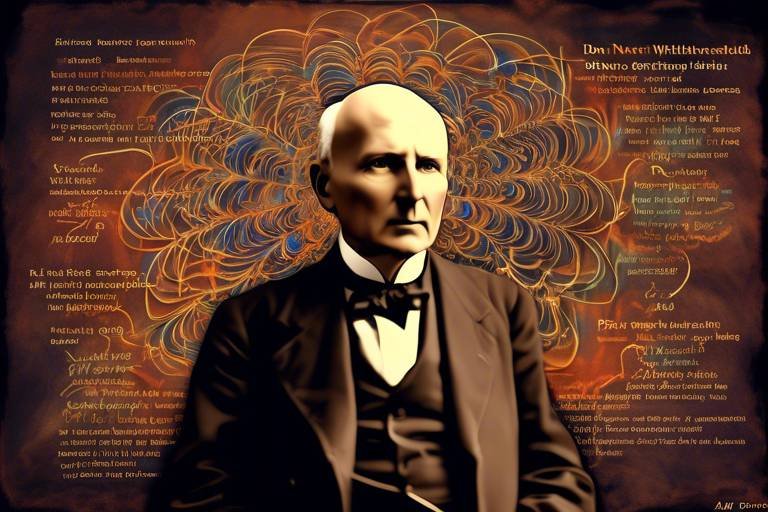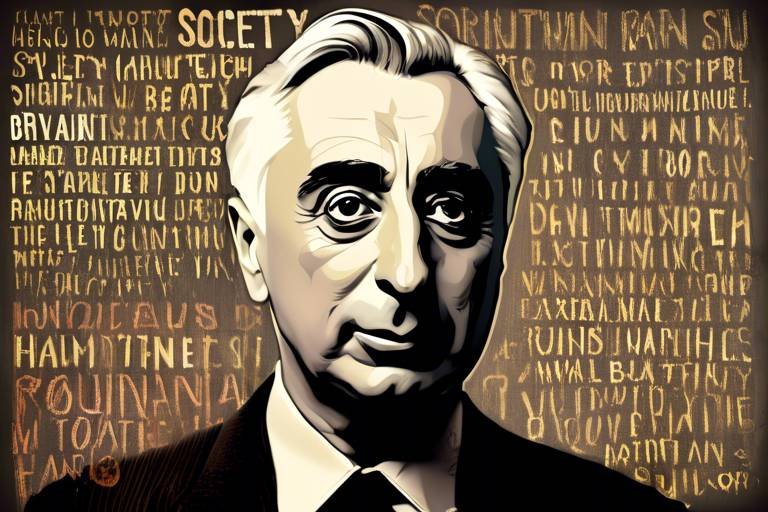Ludwig Wittgenstein - Breaking Down the Tractatus
Ludwig Wittgenstein's Tractatus Logico-Philosophicus is not just a book; it's a profound journey into the very fabric of language and reality. Written during World War I and published in 1921, this work has become a cornerstone of modern philosophy. Wittgenstein's aim was to delineate the limits of language and to explore how our words relate to the world around us. But what makes this text so special? Why does it continue to be a focal point of philosophical debate even today? In this article, we will peel back the layers of the Tractatus, examining its key concepts, themes, and the lasting impact it has had on the landscape of philosophical thought.
The Tractatus is structured in a unique way, consisting of a series of numbered propositions that build upon each other. At its core, Wittgenstein is asking fundamental questions about the nature of meaning and the relationship between language and reality. He presents a vision of the world that is logical and structured, where language serves as a mirror reflecting this structure. This idea is revolutionary because it challenges us to think critically about how we communicate and how our words can either clarify or obscure our understanding of reality. As we delve deeper into the text, we find ourselves grappling with profound philosophical questions: What can we truly know? How do we express our thoughts? And where do the limits of language lie?
Wittgenstein's Tractatus is rich with themes that provoke thought and discussion. Among these, the limits of language, the nature of truth, and the intricate relationship between language and the world stand out. Wittgenstein famously asserts that language can only describe the world as it is, and when it comes to matters beyond description—like ethics and aesthetics—language falls short. This raises the question: if language has limits, what does that mean for our understanding of complex human experiences? The implications of these themes are profound and far-reaching, inviting readers to reconsider their own assumptions about communication and meaning.
One of the most intriguing concepts in the Tractatus is the picture theory of language. Wittgenstein posits that language functions as a series of logical pictures that represent states of affairs in the world. In simple terms, our words are like snapshots of reality. For example, when we say "The cat is on the mat," we create a mental image that corresponds to a specific situation. This theory fundamentally shapes our understanding of meaning, suggesting that the clarity of our thoughts is directly tied to the clarity of our language. It compels us to ask: are we truly capturing reality with our words, or are we merely painting over it with our interpretations?
Wittgenstein argues that the logical structure of language mirrors the logical structure of reality itself. This relationship is not just a coincidence; it is essential to understanding how we communicate. When we construct sentences, we are essentially mapping out the world as we perceive it. This idea suggests that our grasp of truth is contingent upon our ability to articulate it logically through language. In this way, the Tractatus challenges us to refine our thoughts and expressions, pushing us to recognize that clarity in language leads to clarity in thought.
Perhaps one of Wittgenstein's most famous assertions is, "Whereof one cannot speak, thereof one must be silent." This profound statement encapsulates the essence of the limits of language. It invites us to reflect on the boundaries of what can be meaningfully expressed. In philosophical inquiry, this claim has significant implications, suggesting that there are realms of human experience—such as emotions, ethics, and aesthetics—that elude the confines of logical expression. This raises a crucial question: if language cannot encapsulate the entirety of human experience, how do we navigate the complexities of life? The Tractatus urges us to recognize these boundaries and to approach philosophical discussions with humility.
While primarily focused on logic and language, Wittgenstein does not shy away from addressing ethical and aesthetic dimensions. He suggests that these areas transcend logical expression, hinting at a deeper, more intuitive understanding of human experience. This notion challenges us to consider how we articulate our values and artistic expressions in a world that often prioritizes rationality. In what ways do our ethical beliefs and aesthetic judgments shape our understanding of reality? The Tractatus encourages us to explore these questions, acknowledging the richness of human experience that lies beyond mere words.
The impact of the Tractatus on the development of analytic philosophy cannot be overstated. It has shaped the discourse around language, logic, and meaning, influencing a generation of thinkers who sought to unravel the complexities of human communication. Philosophers like Bertrand Russell and the members of the Vienna Circle drew inspiration from Wittgenstein's ideas, leading to the emergence of logical positivism and other philosophical movements. The Tractatus serves as a foundational text that continues to inspire and challenge contemporary philosophers as they grapple with the nuances of language and meaning.
The reception of the Tractatus has been a mixed bag, with both acclaim and criticism emerging over the decades. While many have praised Wittgenstein's clarity and depth, others have pointed out limitations in his approach. Critics argue that the rigid structure of his arguments may overlook the fluidity of language and meaning in real-world contexts. This ongoing debate highlights the dynamic nature of philosophical inquiry, as thinkers continue to engage with Wittgenstein's work, either in support or opposition. The Tractatus remains a focal point for discussions about the nature of truth and the function of language in our lives.
Wittgenstein's Tractatus continues to resonate in contemporary discussions about language and meaning. Its legacy is evident in various fields, from linguistics to cognitive science, where the interplay between language and thought is still a hot topic. As we navigate an increasingly complex world filled with digital communication and social media, the questions raised by Wittgenstein remain ever-relevant. How do our words shape our realities? What are the limits of our expressions in an age of rapid information exchange? The Tractatus not only invites us to ponder these questions but also challenges us to seek clarity and precision in our communication.
- What is the main idea of the Tractatus? The main idea revolves around the relationship between language and reality, emphasizing that language serves as a logical picture of the world.
- Why is the Tractatus significant? It is significant because it laid the groundwork for modern analytic philosophy and continues to influence discussions about language and meaning.
- What are some criticisms of the Tractatus? Critics argue that its rigid structure may overlook the complexities and nuances of real-world language use.
- How does Wittgenstein view ethics and aesthetics? Wittgenstein suggests that ethics and aesthetics transcend logical expression, inviting deeper, more intuitive understanding.

Tractatus Logico-Philosophicus,
This article explores the key concepts and implications of Wittgenstein's Tractatus Logico-Philosophicus, examining its influence on philosophy and language, as well as its enduring relevance in contemporary thought.
The Tractatus presents a unique perspective on language and reality. This section discusses its structure, main arguments, and the philosophical questions it aims to address, providing a foundation for deeper exploration.
Wittgenstein's work is rich with themes such as the limits of language, the nature of truth, and the relationship between language and the world. This section highlights these central ideas and their implications.
One of the core concepts in the Tractatus is the picture theory, which suggests that language represents reality through logical pictures. This section delves into how this theory shapes our understanding of meaning.
Wittgenstein argues that the structure of language mirrors the structure of reality. This subsection examines how this relationship is articulated in the Tractatus and its philosophical significance.
Wittgenstein famously asserts that whereof one cannot speak, thereof one must be silent. This part explores the implications of this claim for philosophical inquiry and the boundaries of language.
Wittgenstein touches on ethical and aesthetic dimensions, suggesting that these areas transcend logical expression. This section investigates how these themes are treated within the framework of the Tractatus.
The Tractatus has profoundly impacted the development of analytic philosophy. This section discusses its influence on subsequent thinkers and movements, shaping discussions around language, logic, and meaning.
The reception of the Tractatus has been varied, with both acclaim and criticism. This part analyzes key critiques and how they have contributed to ongoing debates in philosophy.
Wittgenstein's Tractatus continues to resonate in contemporary discussions about language and meaning. This section highlights its lasting legacy and relevance in modern philosophical discourse.
- What is the main idea of the Tractatus Logico-Philosophicus?
The main idea revolves around the relationship between language and reality, particularly how language can depict the world through logical structures. - How did Wittgenstein influence modern philosophy?
Wittgenstein's ideas laid the groundwork for much of analytic philosophy, particularly in the realms of language, meaning, and the limits of expression. - What is the picture theory of language?
The picture theory posits that statements in language can be understood as pictures of facts, meaning that the structure of language reflects the structure of reality. - Why is the Tractatus considered significant?
It is significant because it challenges the way we think about language, logic, and the boundaries of philosophical inquiry, influencing generations of thinkers.

examining its influence on philosophy and language, as well as its enduring relevance in contemporary thought.
This article explores the key concepts and implications of Wittgenstein's Tractatus Logico-Philosophicus, examining its influence on philosophy and language, as well as its enduring relevance in contemporary thought.
The Tractatus presents a unique perspective on language and reality. This section discusses its structure, main arguments, and the philosophical questions it aims to address, providing a foundation for deeper exploration.
Wittgenstein's work is rich with themes such as the limits of language, the nature of truth, and the relationship between language and the world. This section highlights these central ideas and their implications.
One of the core concepts in the Tractatus is the picture theory, which suggests that language represents reality through logical pictures. This section delves into how this theory shapes our understanding of meaning.
Wittgenstein argues that the structure of language mirrors the structure of reality. This subsection examines how this relationship is articulated in the Tractatus and its philosophical significance.
Wittgenstein famously asserts that whereof one cannot speak, thereof one must be silent. This part explores the implications of this claim for philosophical inquiry and the boundaries of language.
Wittgenstein touches on ethical and aesthetic dimensions, suggesting that these areas transcend logical expression. This section investigates how these themes are treated within the framework of the Tractatus.
The Tractatus has profoundly impacted the development of analytic philosophy. This section discusses its influence on subsequent thinkers and movements, shaping discussions around language, logic, and meaning.
The reception of the Tractatus has been varied, with both acclaim and criticism. This part analyzes key critiques and how they have contributed to ongoing debates in philosophy.
Wittgenstein's Tractatus continues to resonate in contemporary discussions about language and meaning. This section highlights its lasting legacy and relevance in modern philosophical discourse.
The influence of Wittgenstein's Tractatus on philosophy and language is nothing short of revolutionary. It doesn't just dabble in abstract ideas; it challenges the very foundations upon which our understanding of language rests. By proposing that language is a picture of reality, Wittgenstein invites us to rethink how we communicate and comprehend the world around us. This idea alone has sparked a myriad of conversations and debates, encouraging philosophers to explore the intricate relationship between language and the actual world we inhabit.
Moreover, the Tractatus raises profound questions about the limits of our understanding. When Wittgenstein states that "whereof one cannot speak, thereof one must be silent," he isn't just making a clever remark; he is highlighting the constraints of language itself. This assertion compels philosophers to consider what lies beyond the realm of verbal expression and encourages them to grapple with the ineffable aspects of human experience. In a world increasingly dominated by complex ideas and nuanced emotions, this perspective remains strikingly relevant.
In terms of its implications for contemporary thought, the Tractatus serves as a cornerstone for discussions about meaning and interpretation. Philosophers today still refer back to Wittgenstein’s ideas when debating the nature of truth and the role of language in shaping our perceptions. The enduring relevance of the Tractatus is evident in various fields, including linguistics, cognitive science, and even artificial intelligence. As we continue to explore how language functions and evolves, Wittgenstein's insights provide a vital framework for understanding these dynamics.
To illustrate the influence of the Tractatus on modern philosophy, consider the following table that outlines key thinkers and movements that have been shaped by Wittgenstein's work:
| Thinker/Movement | Influence |
|---|---|
| Bertrand Russell | Developed ideas on logical atomism influenced by Wittgenstein's picture theory. |
| Ludwig Feuerbach | Explored the limits of language in relation to existential questions. |
| Analytic Philosophy | Established a framework for examining philosophical problems through language analysis. |
| Post-structuralism | Challenged the notion of fixed meaning in language, echoing Wittgenstein's ideas. |
In conclusion, the Tractatus does more than just influence philosophy; it reshapes our understanding of communication and reality. Its implications are vast, and its relevance continues to be felt across various disciplines. As we navigate the complexities of modern thought, Wittgenstein’s insights remind us that the quest for meaning is as much about the limits of our language as it is about the words we choose.
- What is the main argument of Wittgenstein's Tractatus?
The main argument revolves around the idea that language functions as a representation of reality, and it explores the limits of what can be meaningfully said.
- How has the Tractatus influenced modern philosophy?
It has shaped discussions in analytic philosophy, language theory, and even cognitive science, prompting deeper inquiries into the nature of meaning.
- What does Wittgenstein mean by "whereof one cannot speak, thereof one must be silent"?
This phrase emphasizes the limitations of language and suggests that there are aspects of experience that cannot be adequately expressed through words.

Understanding the Tractatus
The Tractatus Logico-Philosophicus, written by the enigmatic philosopher Ludwig Wittgenstein, is a profound exploration of the relationship between language and reality. At its core, the Tractatus presents a unique perspective that challenges conventional understandings of how we communicate and perceive the world around us. It is structured in a series of numbered propositions, which may seem daunting at first, but this organization serves a purpose: to guide readers through a logical progression of thought.
Wittgenstein's main argument revolves around the idea that language is not merely a tool for communication; it is a representation of the world itself. He posits that the structure of language mirrors the structure of reality, which leads to a fascinating implication: if language can accurately depict the world, then it must also have limitations. This notion is pivotal in understanding the Tractatus, as it raises questions about what can and cannot be expressed through words. In essence, Wittgenstein is inviting us to reflect on the boundaries of our own understanding.
To grasp the depth of the Tractatus, it’s essential to consider the philosophical questions it aims to address. Some of these include:
- What is the nature of truth?
- How does language relate to the world it describes?
- What are the limits of what can be said?
Wittgenstein's exploration of these questions is not just an academic exercise; it has real-world implications. By dissecting the relationship between language and reality, he encourages us to think critically about our own use of language and its impact on our understanding of the world. The Tractatus serves as a philosophical map, guiding us through complex terrain where meaning, logic, and expression intersect.
Moreover, the implications of Wittgenstein's work extend beyond philosophy into various fields such as linguistics, cognitive science, and even artificial intelligence. The fundamental idea that language shapes our perception of reality can be seen in how we communicate in everyday life. For instance, consider how different languages have unique ways of expressing time, relationships, and emotions. This linguistic diversity reflects varied worldviews, emphasizing the significant role language plays in shaping our experiences.
In summary, the Tractatus is more than just a philosophical text; it is a call to examine the very foundations of our understanding of language and reality. Wittgenstein's work challenges us to confront the limitations of our expression and encourages us to explore the profound connections between words and the world they seek to describe.

Tractatus
This article explores the key concepts and implications of Wittgenstein's Tractatus Logico-Philosophicus, examining its influence on philosophy and language, as well as its enduring relevance in contemporary thought.
The presents a unique perspective on language and reality. This section discusses its structure, main arguments, and the philosophical questions it aims to address, providing a foundation for deeper exploration.
Wittgenstein's work is rich with themes such as the limits of language, the nature of truth, and the relationship between language and the world. This section highlights these central ideas and their implications.
One of the core concepts in the is the picture theory, which suggests that language represents reality through logical pictures. This section delves into how this theory shapes our understanding of meaning.
Wittgenstein argues that the structure of language mirrors the structure of reality. This subsection examines how this relationship is articulated in the and its philosophical significance.
Wittgenstein famously asserts that whereof one cannot speak, thereof one must be silent. This part explores the implications of this claim for philosophical inquiry and the boundaries of language.
Wittgenstein touches on ethical and aesthetic dimensions, suggesting that these areas transcend logical expression. This section investigates how these themes are treated within the framework of the .
The has profoundly impacted the development of analytic philosophy. This section discusses its influence on subsequent thinkers and movements, shaping discussions around language, logic, and meaning.
The reception of the has been varied, with both acclaim and criticism. This part analyzes key critiques and how they have contributed to ongoing debates in philosophy.
Wittgenstein's continues to resonate in contemporary discussions about language and meaning. This section highlights its lasting legacy and relevance in modern philosophical discourse.
Here are some common questions regarding Wittgenstein's :
- What is the main purpose of the Tractatus? The aims to outline the relationship between language and reality, proposing that language can only meaningfully depict facts.
- How did Wittgenstein's ideas influence modern philosophy? His work laid the groundwork for analytic philosophy, particularly in discussions about language, meaning, and logic.
- What are the key themes of the Tractatus? The main themes include the limits of language, the nature of truth, and the relationship between language and reality.
- Why is the Tractatus considered significant? It challenges traditional notions of philosophy by arguing that many philosophical problems arise from misunderstandings of language.
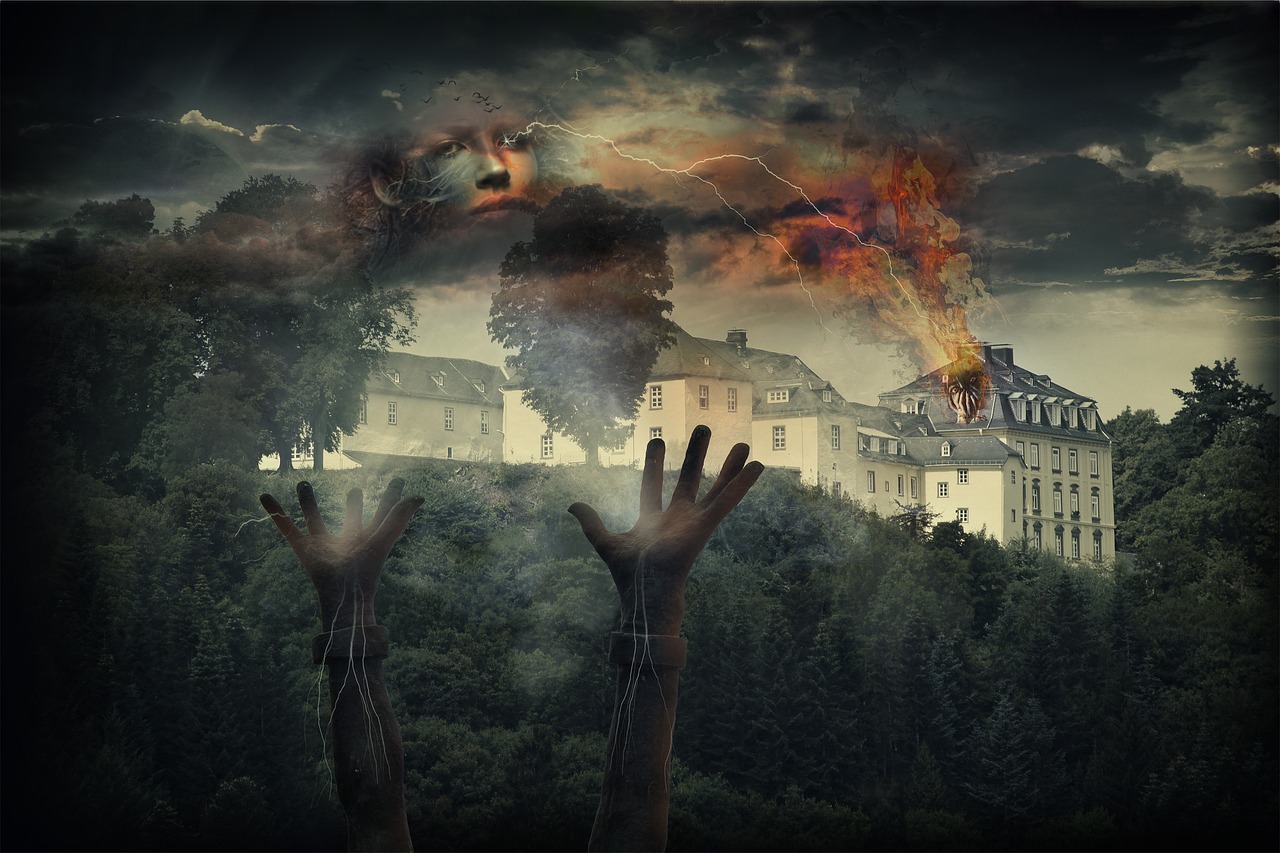
presents a unique perspective on language and reality. This section discusses its structure, main arguments, and the philosophical questions it aims to address, providing a foundation for deeper exploration.
The Tractatus Logico-Philosophicus is not just a book; it's a profound exploration of the intricate relationship between language and reality. Wittgenstein's work presents a unique perspective that challenges conventional notions of how we communicate and understand the world around us. At its core, the Tractatus is structured in a way that mirrors the logical structure of reality itself. This is not merely a coincidence but a fundamental assertion of Wittgenstein's philosophy.
To grasp the essence of the Tractatus, one must first appreciate its structure. The text is divided into a series of numbered propositions, each building upon the last, creating a logical progression that guides the reader through Wittgenstein's thought process. This systematic approach invites readers to engage deeply with the material, leading them to question their own understanding of language and its limitations.
Wittgenstein’s main arguments revolve around the idea that language is a tool for depicting reality, but it is also limited in its scope. He famously stated that "whereof one cannot speak, thereof one must be silent," highlighting the boundaries of language and the philosophical questions it raises. This assertion invites us to ponder: if language cannot encapsulate certain experiences or truths, what does that mean for our understanding of the world? Are there aspects of existence that lie beyond the reach of our words?
Furthermore, the Tractatus delves into the nature of truth and how it relates to language. Wittgenstein posits that statements are meaningful only when they can be verified against the world. This leads to a fascinating inquiry into the nature of meaning itself. What does it mean for something to be true? Is truth an objective reality, or is it shaped by our linguistic frameworks? These philosophical questions serve as a foundation for deeper exploration, inviting readers to rethink their assumptions about language and its role in shaping our understanding of reality.
In conclusion, the Tractatus Logico-Philosophicus is a pivotal work that challenges us to reconsider the relationship between language and reality. Its unique structure, main arguments, and the philosophical questions it raises provide a rich foundation for anyone eager to explore the depths of philosophical inquiry.
Wittgenstein's work is rich with themes such as the limits of language, the nature of truth, and the relationship between language and the world. This section highlights these central ideas and their implications.
One of the core concepts in the Tractatus is the picture theory, which suggests that language represents reality through logical pictures. This section delves into how this theory shapes our understanding of meaning.
Wittgenstein argues that the structure of language mirrors the structure of reality. This subsection examines how this relationship is articulated in the Tractatus and its philosophical significance.
Wittgenstein famously asserts that whereof one cannot speak, thereof one must be silent. This part explores the implications of this claim for philosophical inquiry and the boundaries of language.
Wittgenstein touches on ethical and aesthetic dimensions, suggesting that these areas transcend logical expression. This section investigates how these themes are treated within the framework of the Tractatus.
The Tractatus has profoundly impacted the development of analytic philosophy. This section discusses its influence on subsequent thinkers and movements, shaping discussions around language, logic, and meaning.
The reception of the Tractatus has been varied, with both acclaim and criticism. This part analyzes key critiques and how they have contributed to ongoing debates in philosophy.
Wittgenstein's Tractatus continues to resonate in contemporary discussions about language and meaning. This section highlights its lasting legacy and relevance in modern philosophical discourse.
- What is the main argument of the Tractatus?
The main argument is that language represents reality through logical structures, and there are limits to what can be meaningfully said.
- How has the Tractatus influenced modern philosophy?
It has shaped discussions in analytic philosophy, particularly concerning language, logic, and the nature of truth.
- What does Wittgenstein mean by "whereof one cannot speak, thereof one must be silent"?
This phrase suggests that if something cannot be expressed in language, it is better to remain silent about it, highlighting the limitations of linguistic expression.
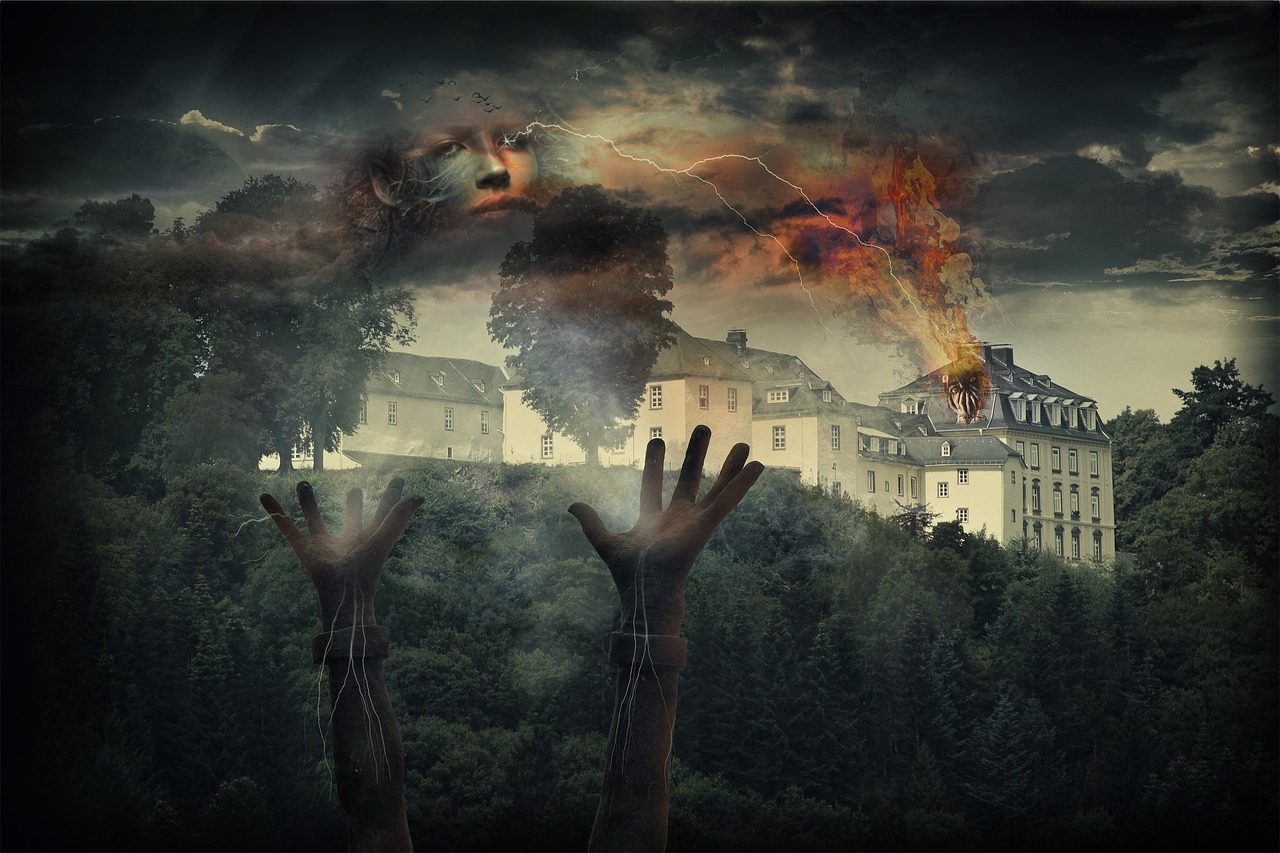
Key Themes in the Tractatus
The Tractatus Logico-Philosophicus by Ludwig Wittgenstein is not just a text; it's a profound exploration of the very fabric of language and reality. At its core, the Tractatus is rich with key themes that challenge our understanding of how we communicate and perceive the world around us. One of the most striking themes is the limits of language. Wittgenstein famously states, "Whereof one cannot speak, thereof one must be silent." This assertion invites us to reflect on the boundaries of our linguistic capabilities. It suggests that there are aspects of existence that elude verbal articulation, leaving us grappling with the ineffable. Imagine trying to describe a feeling of love or the beauty of a sunset; words can only capture a fragment of the experience, hinting at a deeper reality beyond linguistic expression.
Another central theme is the nature of truth. In the Tractatus, Wittgenstein posits that truth is not merely a reflection of reality but is instead anchored in the logical structure of propositions. He argues that a statement is true if it accurately represents a state of affairs in the world. This view leads to a fascinating inquiry into the relationship between language and reality. The Tractatus suggests that our language is a tool that can create a logical picture of the world, and this brings us to the picture theory of language. According to this theory, words are not just arbitrary symbols; they function as representations of facts, creating a correspondence between language and the world.
Wittgenstein’s picture theory implies that for language to be meaningful, it must be able to depict reality logically. This is a pivotal concept that shapes our understanding of meaning. For instance, consider a simple sentence like "The cat is on the mat." This statement can be visualized, and its truth can be verified by checking the actual state of affairs. Thus, language becomes a medium through which we can convey and verify truths about the world.
Delving deeper, Wittgenstein argues that the logical structure of language mirrors the logical structure of reality. This relationship is not just a coincidence; it’s fundamental to how we engage with the world. When we construct sentences, we are not merely stringing words together; we are creating a logical framework that reflects the complexities of our experiences. This notion compels us to consider how our understanding of the world is mediated through the lens of language. The implications of this idea are profound, as they challenge us to rethink how we perceive and articulate our realities.
Wittgenstein's assertion about the limits of language also raises important questions about philosophical inquiry. If there are things that cannot be expressed in words, what does that mean for philosophy as a discipline? It suggests that some philosophical problems may be rooted in a misunderstanding of language itself. Perhaps, rather than seeking answers through endless dialogue, we should recognize the boundaries of what can be meaningfully discussed. This perspective invites a more introspective approach to philosophical inquiry, urging us to consider silence as a form of understanding.
Beyond these themes, Wittgenstein also touches on the realms of ethics and aesthetics. He implies that these dimensions of human experience transcend logical expression. Ethics, for instance, cannot be neatly packaged into propositional language; it evokes feelings, intuitions, and moral understandings that resist quantification. Similarly, aesthetic experiences—like the appreciation of a beautiful painting or a moving piece of music—transcend mere description. Wittgenstein's treatment of these themes suggests that while language is powerful, it has its limitations, especially when it comes to the profound aspects of human experience.
In summary, the key themes in the Tractatus challenge us to reconsider our relationship with language, truth, and reality. Wittgenstein's insights encourage us to explore the boundaries of linguistic expression and recognize the rich, often ineffable dimensions of human experience that lie beyond words.

The Picture Theory of Language
Wittgenstein's Picture Theory of Language is a fascinating concept that forms the bedrock of his arguments in the Tractatus Logico-Philosophicus. At its core, this theory posits that language functions as a representation of reality through logical pictures. Imagine language as a map; just as a map depicts geographical features, language depicts states of affairs in the world. This analogy helps us grasp how Wittgenstein viewed the relationship between words and the world around us.
According to Wittgenstein, meaningful statements are those that can be pictured or represented in reality. In his view, a proposition is a picture of a fact, and this picture must share a form with the reality it represents. This means that the structure of language mirrors the structure of reality itself. For example, consider the proposition "The cat is on the mat." This statement can be visualized, creating a direct link between the words used and the physical world they describe.
The implications of the Picture Theory are profound. By establishing a connection between language and reality, Wittgenstein challenges us to think critically about the statements we make. Are they merely sounds or symbols, or do they hold genuine meaning? This leads us to consider the following points:
- Representation: Language must accurately represent the world to be meaningful.
- Truth Conditions: A statement's truth is determined by its ability to correspond with reality.
- Limits of Expression: If something cannot be pictured, it falls outside the realm of meaningful language.
However, the Picture Theory is not without its challenges. Critics argue that it oversimplifies the complexity of language and meaning. Language is often used in ways that extend beyond mere representation. For instance, consider poetry or metaphor—these forms of expression evoke emotions and ideas that cannot be easily pinned down to a specific reality. Wittgenstein himself recognized the limitations of his theory, suggesting that while it provides a framework for understanding language, it does not encompass the full spectrum of linguistic expression.
In summary, the Picture Theory of Language offers a compelling lens through which to examine the relationship between language and reality. It emphasizes the importance of logical structure and representation while also inviting us to question the boundaries of meaning. As we delve deeper into Wittgenstein's work, we uncover the intricate dance between language and the world, a dance that continues to inspire philosophical inquiry today.

Tractatus
This article explores the key concepts and implications of Wittgenstein's Tractatus Logico-Philosophicus, examining its influence on philosophy and language, as well as its enduring relevance in contemporary thought.
The presents a unique perspective on language and reality. This work is structured in a way that is both intriguing and complex, consisting of a series of propositions that build upon each other. At its core, Wittgenstein aims to address profound philosophical questions regarding the nature of language and its relationship to the world. The is not just a philosophical text; it is a journey into the very fabric of how we communicate and understand reality. Through its concise yet powerful statements, Wittgenstein challenges readers to reconsider their assumptions about language and meaning.
Wittgenstein's work is rich with themes such as the limits of language, the nature of truth, and the relationship between language and the world. These central ideas are not merely academic; they resonate deeply with our everyday experiences and the ways we interact with each other. For instance, the concept of the limits of language invites us to reflect on the boundaries of our expressions and the ineffable aspects of human experience. It raises the question: what happens when words fail us? This exploration of language's boundaries is critical in understanding not just philosophy but also communication in our lives.
One of the core concepts in the is the picture theory, which suggests that language represents reality through logical pictures. This theory posits that words and sentences can be seen as models of the world, where the arrangement of words corresponds to the arrangement of objects in reality. For example, when we say "The cat is on the mat," we create a mental image that reflects a specific state of affairs in the world. This section delves into how this theory shapes our understanding of meaning and emphasizes the importance of clarity in communication.
Wittgenstein argues that the structure of language mirrors the structure of reality. This relationship is articulated through his assertion that propositions can only represent facts. If we consider a simple statement like "Snow is white," we find that the logical structure of the sentence corresponds to a factual state of the world. This alignment between language and reality is not merely a coincidence; it is a fundamental aspect of how we convey information and understand our surroundings. By exploring this relationship, we gain insight into the philosophical significance of language as a tool for navigating reality.
Wittgenstein famously asserts that “whereof one cannot speak, thereof one must be silent.” This profound statement has significant implications for philosophical inquiry. It suggests that there are aspects of human experience that lie beyond the grasp of language—feelings, emotions, and existential truths that cannot be neatly packaged into words. This limitation invites us to ponder the boundaries of our understanding and the role of silence in communication. It raises important questions about what can truly be expressed and what is left unsaid, pushing the boundaries of philosophical discourse.
Wittgenstein touches on ethical and aesthetic dimensions, suggesting that these areas transcend logical expression. While he primarily focuses on language and logic, he acknowledges that the realms of ethics and aesthetics hold a unique position that cannot be fully articulated through propositional language. This section investigates how these themes are treated within the framework of the , emphasizing that the most profound truths about human existence may elude verbal expression. This realization invites readers to explore the richness of experience beyond the confines of language.
The has profoundly impacted the development of analytic philosophy. Its ideas have shaped discussions around language, logic, and meaning, influencing a generation of philosophers who grappled with the implications of Wittgenstein's insights. This section discusses its influence on subsequent thinkers and movements, highlighting the ways in which the continues to inspire philosophical exploration.
The reception of the has been varied, with both acclaim and criticism. Some have hailed it as a groundbreaking work that reshaped the landscape of philosophy, while others have challenged its conclusions and interpretations. This part analyzes key critiques and how they have contributed to ongoing debates in philosophy, revealing the dynamic nature of philosophical inquiry.
Wittgenstein's continues to resonate in contemporary discussions about language and meaning. Its lasting legacy is evident in the ways modern philosophers engage with its themes, exploring the implications of language in a rapidly changing world. This section highlights its enduring relevance in modern philosophical discourse, demonstrating that the questions raised in the are as pertinent today as they were in Wittgenstein's time.
- What is the main idea of the Tractatus? The main idea revolves around the relationship between language and reality, proposing that language serves as a logical representation of the world.
- Why is the Tractatus important? It is considered a foundational text in analytic philosophy, influencing various philosophical movements and discussions surrounding language, logic, and meaning.
- What does Wittgenstein mean by “whereof one cannot speak, thereof one must be silent”? This phrase emphasizes the limitations of language and suggests that some experiences and truths cannot be adequately expressed in words.
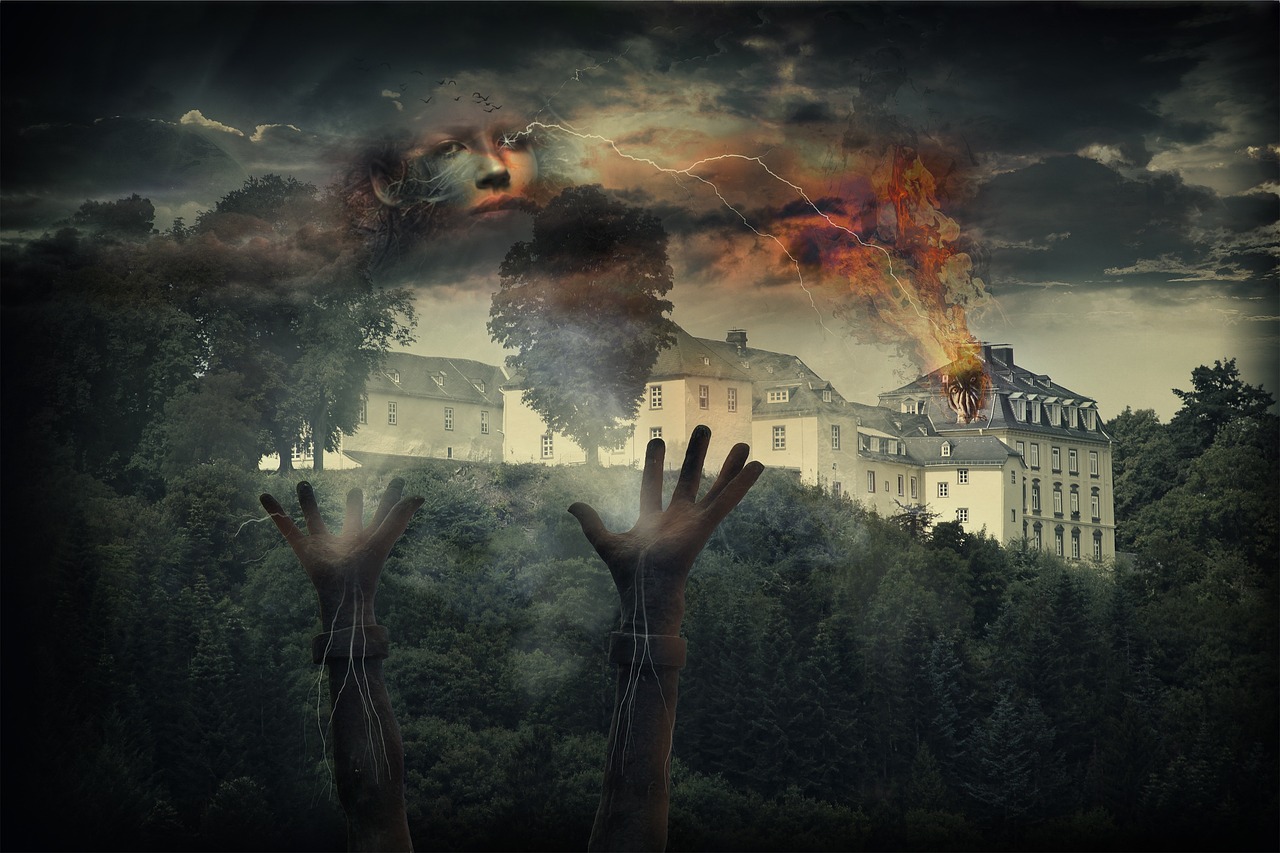
is the picture theory, which suggests that language represents reality through logical pictures. This section delves into how this theory shapes our understanding of meaning.
One of the most fascinating aspects of Ludwig Wittgenstein's Tractatus Logico-Philosophicus is the concept of the picture theory of language. This theory posits that language operates as a form of representation, where words and sentences serve as logical pictures of reality. Imagine language as a map: just as a map provides a visual representation of a geographical area, language provides a structured depiction of the world around us. This analogy helps us grasp how Wittgenstein perceives the relationship between language and reality.
The picture theory suggests that meaningful propositions are those that can be said to depict states of affairs in the world. For instance, when we say, "The cat is on the mat," we are not just stringing words together; we are creating a mental image that corresponds to a specific situation in reality. This correspondence between language and the world is crucial, as it underscores the idea that our understanding of meaning is deeply intertwined with our ability to visualize and conceptualize the world.
To delve deeper, let's consider the implications of this theory. Wittgenstein argues that if language can only represent facts about the world, then it inherently has limits. This leads to his famous assertion: "Whereof one cannot speak, thereof one must be silent." In other words, if something cannot be logically depicted or expressed through language, it falls outside the realm of meaningful discourse. This raises intriguing questions about the nature of philosophical inquiry itself. Can we truly discuss concepts like ethics or aesthetics, which often elude precise definition? Wittgenstein seems to suggest that these areas may transcend the boundaries of logical representation.
Furthermore, the picture theory challenges us to reconsider the function of language in our everyday lives. It invites us to think critically about how we communicate and the meanings we derive from our interactions. Are we merely exchanging words, or are we constructing intricate pictures that shape our understanding of the world? This perspective encourages a more profound engagement with language, prompting us to explore the nuances and complexities inherent in our expressions.
In summary, Wittgenstein's picture theory of language is a compelling framework that reshapes our understanding of meaning. By positing that language functions as a logical representation of reality, it opens up a dialogue about the limits of language and the nature of meaningful discourse. As we navigate through the intricacies of communication, this theory serves as a reminder of the power and limitations of the words we use.
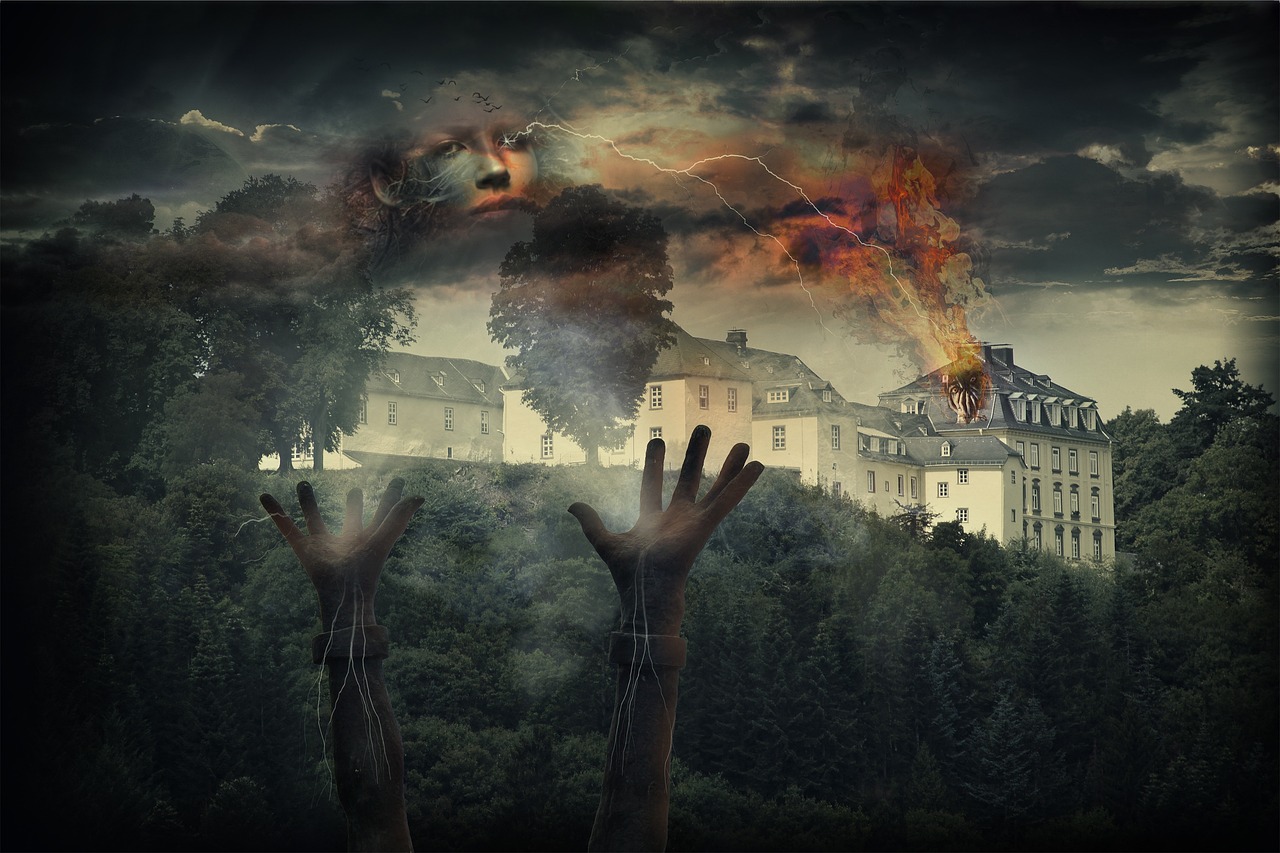
Logical Structure and Reality
In the Tractatus Logico-Philosophicus, Ludwig Wittgenstein presents a compelling argument that the structure of language is intricately linked to the structure of reality. This idea is not just a passing thought; it forms the backbone of his philosophy. Wittgenstein proposes that language acts as a mirror, reflecting the world around us. To grasp this concept fully, we need to delve into how he articulates this relationship.
Wittgenstein suggests that every meaningful statement in language corresponds to a fact in the world. This correspondence is what he refers to as the logical structure. Essentially, if we were to visualize language and reality, it would look something like this:
| Language | Reality |
|---|---|
| Propositions | Facts |
| Logical Form | State of Affairs |
This table illustrates the direct relationship between language and reality, where propositions serve as representations of facts. But what does this mean for how we understand meaning? Wittgenstein argues that the meaning of a proposition is determined by its ability to depict a state of affairs in the world. In other words, a statement is meaningful if it can be verified through experience or observation.
To further clarify this concept, let's consider an analogy. Imagine a map and the terrain it represents. Just as a map shows the relationships between different geographical features, language reveals the relationships between various elements of reality. However, just like a map cannot capture every detail of the landscape, language has its limitations. Wittgenstein emphasizes that while language can describe reality, it cannot encapsulate the totality of it.
This leads us to an essential aspect of Wittgenstein's thought: the boundaries of language. He famously stated, "Whereof one cannot speak, thereof one must be silent." This assertion underscores the idea that there are aspects of reality that lie beyond the reach of language. In this sense, Wittgenstein is not merely concerned with what we can express but also with what remains unexpressed. The logical structure of language, while powerful, is not an all-encompassing tool.
In conclusion, the interplay between logical structure and reality in the Tractatus serves as a profound exploration of how we communicate and understand the world. Wittgenstein's insights compel us to reflect on the limitations of language while acknowledging its role in shaping our perception of reality. As we continue to engage with his work, we find ourselves navigating the delicate balance between what can be said and what remains unsaid.
- What is the main argument of the Tractatus?
The main argument is that the structure of language mirrors the structure of reality, and meaningful propositions correspond to facts in the world. - How does Wittgenstein define meaning?
Wittgenstein defines meaning in terms of the ability of propositions to depict states of affairs that can be verified through experience. - What are the implications of "whereof one cannot speak, thereof one must be silent"?
This statement implies that there are limits to what can be expressed through language, highlighting areas of reality that remain beyond verbal description.

Tractatus
This article explores the key concepts and implications of Wittgenstein's Tractatus Logico-Philosophicus, examining its influence on philosophy and language, as well as its enduring relevance in contemporary thought.
The presents a unique perspective on language and reality. It's not just a book; it's a philosophical journey that challenges our very understanding of how language interacts with the world around us. The structure of the is meticulously organized, consisting of a series of propositions that build upon one another, leading the reader towards profound insights about meaning and truth. At its core, Wittgenstein aims to address philosophical questions that have puzzled thinkers for centuries, such as: What can we truly know? How do our words relate to the world? This section lays the groundwork for a deeper exploration of these themes, inviting readers to engage with the text in a meaningful way.
Wittgenstein's work is rich with themes such as the limits of language, the nature of truth, and the relationship between language and the world. Each of these themes interweaves to create a tapestry of thought that is as intricate as it is enlightening. For instance, the idea that language has limits is not merely a statement; it poses critical implications for philosophical inquiry and our understanding of reality. The challenges us to consider the boundaries of what can be expressed and what must remain unsaid, leading to a deeper appreciation of both language and silence.
One of the core concepts in the is the picture theory, which suggests that language represents reality through logical pictures. Imagine language as a map; it doesn't just represent the territory but aims to mirror it accurately. This theory shapes our understanding of meaning by positing that words and sentences correspond to states of affairs in the world. In essence, Wittgenstein argues that when we speak, we create a picture of the facts we are describing. This section delves into how this theory influences our perception of meaning and the implications it carries for communication.
Wittgenstein argues that the structure of language mirrors the structure of reality. This relationship is not just a casual observation; it is a cornerstone of his philosophy. By asserting that the logical form of language corresponds to the logical form of reality, he opens the door to understanding how we can convey truths about the world through our words. This subsection examines how this relationship is articulated in the and its philosophical significance, emphasizing that our language is not merely a tool for communication but a reflection of the world's inner workings.
Wittgenstein famously asserts that “whereof one cannot speak, thereof one must be silent.” This claim is not just a catchy phrase; it carries profound implications for philosophical inquiry and the boundaries of language. It suggests that there are aspects of human experience that elude verbal expression, leading us to confront the limitations of our own understanding. This part explores the implications of this claim, urging readers to consider the areas of life that remain ineffable and the philosophical ramifications of acknowledging such limits.
Wittgenstein touches on ethical and aesthetic dimensions, suggesting that these areas transcend logical expression. Unlike scientific truths that can be articulated through propositions, ethics and aesthetics exist in a realm that defies strict logical boundaries. This section investigates how these themes are treated within the framework of the , arguing that while we may not be able to speak about them in the same way we do about factual statements, they hold an essential place in the human experience.
The has profoundly impacted the development of analytic philosophy. Its influence can be seen across various thinkers and movements, shaping discussions around language, logic, and meaning. The clarity and precision of Wittgenstein's arguments have inspired a generation of philosophers to pursue a more rigorous approach to philosophical problems, emphasizing the importance of language in shaping our understanding of reality.
The reception of the has been varied, with both acclaim and criticism. Some laud its groundbreaking insights, while others argue that its conclusions are overly restrictive. This part analyzes key critiques and how they have contributed to ongoing debates in philosophy, showcasing the dynamic nature of philosophical discourse and the continuing relevance of Wittgenstein's work.
Wittgenstein's continues to resonate in contemporary discussions about language and meaning. Its lasting legacy is evident in the way it prompts us to reconsider our assumptions about communication, reality, and the limits of expression. This section highlights its enduring relevance in modern philosophical discourse, inviting readers to reflect on how the challenges posed by Wittgenstein remain pertinent today.
- What is the main argument of the Tractatus? The main argument revolves around the idea that language represents reality through logical structures, and that there are limits to what can be meaningfully expressed.
- How does Wittgenstein's picture theory work? Wittgenstein's picture theory posits that language functions as a picture of reality, where words correspond to facts in the world.
- What are the implications of the limits of language? The limits of language suggest that some experiences and truths cannot be articulated, leading to a recognition of the boundaries of philosophical inquiry.
- Why is the Tractatus important in philosophy? The Tractatus is foundational in analytic philosophy, influencing discussions on language, logic, and the nature of meaning.

and its philosophical significance.
This article explores the key concepts and implications of Wittgenstein's Tractatus Logico-Philosophicus, examining its influence on philosophy and language, as well as its enduring relevance in contemporary thought.
The Tractatus presents a unique perspective on language and reality. This section discusses its structure, main arguments, and the philosophical questions it aims to address, providing a foundation for deeper exploration.
Wittgenstein's work is rich with themes such as the limits of language, the nature of truth, and the relationship between language and the world. This section highlights these central ideas and their implications.
One of the core concepts in the Tractatus is the picture theory, which suggests that language represents reality through logical pictures. This section delves into how this theory shapes our understanding of meaning.
Wittgenstein argues that the structure of language mirrors the structure of reality. This subsection examines how this relationship is articulated in the Tractatus and its philosophical significance.
Wittgenstein famously asserts that whereof one cannot speak, thereof one must be silent. This part explores the implications of this claim for philosophical inquiry and the boundaries of language.
Wittgenstein touches on ethical and aesthetic dimensions, suggesting that these areas transcend logical expression. This section investigates how these themes are treated within the framework of the Tractatus.
The Tractatus has profoundly impacted the development of analytic philosophy. This section discusses its influence on subsequent thinkers and movements, shaping discussions around language, logic, and meaning.
The reception of the Tractatus has been varied, with both acclaim and criticism. This part analyzes key critiques and how they have contributed to ongoing debates in philosophy.
Wittgenstein's Tractatus continues to resonate in contemporary discussions about language and meaning. This section highlights its lasting legacy and relevance in modern philosophical discourse.
Wittgenstein's assertion that the structure of language reflects the structure of reality is not just a clever observation; it is a profound philosophical claim that challenges our understanding of both language and the world. By proposing that language serves as a map of reality, he invites us to reconsider how we communicate and comprehend our experiences. This relationship implies that our linguistic expressions are not mere sounds or symbols, but rather they hold the potential to represent the world accurately.
Moreover, this idea has significant implications for the way we approach philosophical problems. If language can indeed mirror reality, then the pursuit of clarity in philosophical discourse becomes paramount. When we engage in philosophical inquiry, we must ensure that our language is precise and structured in a way that reflects the complexities of the world around us. This leads us to a critical realization: misunderstandings often arise not from the ideas themselves, but from the inadequacies of the language we use to express them.
Wittgenstein's insights also push us to confront the limitations of language. He posits that there are aspects of human experience that elude verbal articulation, suggesting that some truths might be beyond the reach of linguistic expression. This notion invites us to explore the boundaries of our understanding and encourages humility in our philosophical endeavors. In a way, it’s like trying to capture a sunset in a photograph; no matter how skilled the photographer, the image can never fully encompass the beauty of the moment. Similarly, Wittgenstein's work challenges us to recognize that some dimensions of reality may remain ineffable.
In summary, the philosophical significance of Wittgenstein's logical structure lies in its capacity to reshape our understanding of language and reality, urging us to strive for clarity while acknowledging the inherent limitations of our expressions. This dual awareness can enrich our philosophical explorations and deepen our appreciation for the complexities of communication.
- What is the main argument of the Tractatus?
The main argument of the Tractatus is that language represents reality through logical structures, and that understanding this relationship is crucial for philosophical inquiry. - How does Wittgenstein's picture theory work?
The picture theory posits that propositions can be understood as pictures of reality, where the arrangement of words corresponds to the arrangement of objects in the world. - What are the limits of language according to Wittgenstein?
Wittgenstein argues that there are aspects of experience that cannot be expressed in language, leading to the famous conclusion that we must remain silent about what cannot be said. - What impact did the Tractatus have on modern philosophy?
The Tractatus significantly influenced analytic philosophy, shaping discussions around language, meaning, and the nature of philosophical problems.

Limits of Language
In his groundbreaking work, the Tractatus Logico-Philosophicus, Ludwig Wittgenstein famously stated, “Whereof one cannot speak, thereof one must be silent.” This assertion serves as a profound reminder of the boundaries that language imposes on our understanding of the world. It suggests that while language is an incredible tool for communication, it is also inherently limited. Just think about it: how often do we find ourselves struggling to articulate our feelings or experiences? This limitation of language can lead to a frustrating gap between what we wish to express and what we can actually convey.
Wittgenstein's exploration of the limits of language raises several critical questions for philosophical inquiry. For instance, can we truly capture the essence of our thoughts and emotions in words? Or do we merely scratch the surface of our experiences? This leads us to consider the implications of language in various domains, such as ethics, aesthetics, and even science. Here are a few key points to ponder:
- The Inexpressible: Some concepts or feelings, like love or beauty, may elude precise definition. They exist in a realm beyond the reach of language.
- Philosophical Inquiry: If language cannot adequately express certain ideas, what does that mean for philosophical debates? Are we wasting our time discussing topics that are inherently ineffable?
- Communicative Barriers: Misunderstandings often arise from the limitations of language. Different interpretations can lead to confusion and conflict, highlighting the fragile nature of communication.
Wittgenstein's assertion challenges us to recognize the boundaries of our linguistic capabilities. It compels us to explore alternative ways of knowing and understanding the world around us. For instance, can art, music, or even silence convey meanings that words cannot? This inquiry opens up a rich tapestry of possibilities, inviting us to engage with the world in ways that transcend mere verbal expression.
Moreover, the limits of language also compel us to reflect on the nature of truth. If our words fail to capture the full spectrum of reality, how do we discern what is true? This question is particularly relevant in today's information-saturated world, where the clarity of language is often obscured by ambiguity and interpretation. It forces us to confront the idea that perhaps the most profound truths lie beyond linguistic representation.
In conclusion, Wittgenstein's exploration of the limits of language invites us to embrace the complexities of human experience. It challenges us to seek understanding beyond words, recognizing that some aspects of life cannot be neatly packaged into sentences or phrases. As we navigate our interactions and philosophical inquiries, we must remain aware of the inherent limitations of language, while also celebrating the beauty and richness it brings to our lives.
- What is the main idea behind Wittgenstein's limits of language?
Wittgenstein argues that language has inherent limitations, and there are things that cannot be adequately expressed in words. - How does this concept affect philosophical debates?
The limits of language suggest that some philosophical discussions may be futile if they revolve around concepts that cannot be expressed verbally. - Can art convey meanings that language cannot?
Yes, many believe that forms of expression like art and music can communicate emotions and ideas that words often fail to capture.

whereof one cannot speak, thereof one must be silent.
This article explores the key concepts and implications of Wittgenstein's Tractatus Logico-Philosophicus, examining its influence on philosophy and language, as well as its enduring relevance in contemporary thought.
The Tractatus presents a unique perspective on language and reality. This section discusses its structure, main arguments, and the philosophical questions it aims to address, providing a foundation for deeper exploration.
Wittgenstein's work is rich with themes such as the limits of language, the nature of truth, and the relationship between language and the world. This section highlights these central ideas and their implications.
One of the core concepts in the Tractatus is the picture theory, which suggests that language represents reality through logical pictures. This section delves into how this theory shapes our understanding of meaning.
Wittgenstein argues that the structure of language mirrors the structure of reality. This subsection examines how this relationship is articulated in the Tractatus and its philosophical significance.
Wittgenstein famously asserts that "whereof one cannot speak, thereof one must be silent." This part explores the implications of this claim for philosophical inquiry and the boundaries of language.
When Wittgenstein makes this profound statement, he is essentially drawing a line in the sand regarding the limitations of language. It’s a bit like trying to paint a sunset with only the colors black and white; you simply can’t capture the full essence of the experience. Language, in its nature, is meant to express thoughts, convey ideas, and communicate feelings. However, there are realms of experience and knowledge that elude verbal articulation. Think about emotions, for instance. Can you truly encapsulate the feeling of love or grief in mere words? Or consider the vastness of the universe—how can one articulate the awe and wonder it inspires? The reality is, there are moments or concepts that transcend the confines of our linguistic capabilities.
Wittgenstein’s assertion pushes us to recognize that there are limits to what can be meaningfully discussed. This leads to a crucial question: if we cannot adequately express something, should we even attempt to speak about it? In many ways, this is an invitation to embrace silence when words fail us. It is a call to acknowledge the ineffable aspects of our existence.
To further illustrate this idea, let’s consider a table that summarizes the key implications of Wittgenstein's statement:
| Implication | Description |
|---|---|
| Limits of Expression | Recognizes that some experiences or concepts cannot be fully articulated. |
| Philosophical Inquiry | Encourages philosophers to focus on what can be meaningfully discussed. |
| Value of Silence | Promotes the idea that silence can be more powerful than words in certain contexts. |
Ultimately, Wittgenstein’s view challenges us to explore the boundaries of our language and to confront the mysteries that lie beyond it. It’s a reminder that while language is a powerful tool, it is not the only means of understanding our world. Sometimes, the most profound insights come in moments of quiet contemplation, where we allow ourselves to feel rather than articulate.
Wittgenstein touches on ethical and aesthetic dimensions, suggesting that these areas transcend logical expression. This section investigates how these themes are treated within the framework of the Tractatus.
The Tractatus has profoundly impacted the development of analytic philosophy. This section discusses its influence on subsequent thinkers and movements, shaping discussions around language, logic, and meaning.
The reception of the Tractatus has been varied, with both acclaim and criticism. This part analyzes key critiques and how they have contributed to ongoing debates in philosophy.
Wittgenstein's Tractatus continues to resonate in contemporary discussions about language and meaning. This section highlights its lasting legacy and relevance in modern philosophical discourse.
- What is the main argument of the Tractatus? The main argument revolves around the idea that language has limits and that what can be said must be clearly defined.
- How did Wittgenstein influence modern philosophy? Wittgenstein's work laid the groundwork for analytic philosophy, particularly in discussions about language, logic, and meaning.
- What are the implications of “whereof one cannot speak, thereof one must be silent”? This phrase emphasizes the idea that some experiences or truths are beyond linguistic expression, advocating for silence in such contexts.

This part explores the implications of this claim for philosophical inquiry and the boundaries of language.
This article explores the key concepts and implications of Wittgenstein's Tractatus Logico-Philosophicus, examining its influence on philosophy and language, as well as its enduring relevance in contemporary thought.
The Tractatus presents a unique perspective on language and reality. This section discusses its structure, main arguments, and the philosophical questions it aims to address, providing a foundation for deeper exploration.
Wittgenstein's work is rich with themes such as the limits of language, the nature of truth, and the relationship between language and the world. This section highlights these central ideas and their implications.
One of the core concepts in the Tractatus is the picture theory, which suggests that language represents reality through logical pictures. This section delves into how this theory shapes our understanding of meaning.
Wittgenstein argues that the structure of language mirrors the structure of reality. This subsection examines how this relationship is articulated in the Tractatus and its philosophical significance.
Wittgenstein famously asserts that whereof one cannot speak, thereof one must be silent. This part explores the implications of this claim for philosophical inquiry and the boundaries of language.
The implications of Wittgenstein's assertion are profound and far-reaching. At its core, this claim challenges philosophers to consider the limitations inherent in human language. If there are aspects of reality that cannot be adequately expressed through language, what does that mean for our understanding of knowledge and truth? This is not merely an academic question; it invites us to reflect on the very nature of our communication and the extent to which words can capture our experiences.
By establishing these boundaries, Wittgenstein prompts a reevaluation of philosophical inquiry itself. Traditional philosophy often seeks to articulate complex ideas and truths through language, but if language has its limits, then we must ask: What can we truly know? What can we express? This leads to a fascinating exploration of the relationship between language and thought. Are there thoughts that exist beyond linguistic expression? Can we think about what we cannot articulate? These questions highlight the tension between our desire for clarity and the inherent ambiguity of human experience.
Moreover, Wittgenstein's assertion encourages a more humble approach to philosophical discourse. It suggests that perhaps some questions are better left unasked or approached with caution. In a way, it’s like trying to capture the essence of a sunset in a photograph; no matter how skilled the photographer, the image can never fully convey the experience of standing there, feeling the warmth of the sun and the coolness of the evening breeze. This metaphor illustrates the limitations of language and invites us to appreciate the beauty of silence in the face of the ineffable.
Ultimately, Wittgenstein's insights challenge us to recognize the boundaries of language while also exploring the rich, complex world that lies beyond those boundaries. It opens up a space for ethics, aesthetics, and the profound mysteries of existence that may resist linguistic expression. In doing so, it lays the groundwork for a more nuanced understanding of both language and reality.
Wittgenstein touches on ethical and aesthetic dimensions, suggesting that these areas transcend logical expression. This section investigates how these themes are treated within the framework of the Tractatus.
The Tractatus has profoundly impacted the development of analytic philosophy. This section discusses its influence on subsequent thinkers and movements, shaping discussions around language, logic, and meaning.
The reception of the Tractatus has been varied, with both acclaim and criticism. This part analyzes key critiques and how they have contributed to ongoing debates in philosophy.
Wittgenstein's Tractatus continues to resonate in contemporary discussions about language and meaning. This section highlights its lasting legacy and relevance in modern philosophical discourse.
- What is the main argument of the Tractatus? The main argument revolves around the idea that language can only represent facts about the world, and anything beyond that is nonsensical.
- How does Wittgenstein define the limits of language? Wittgenstein posits that language's limits are the limits of our world; we cannot meaningfully discuss what lies beyond those limits.
- What impact did the Tractatus have on modern philosophy? The Tractatus influenced the development of analytic philosophy, particularly in discussions about language, logic, and meaning.
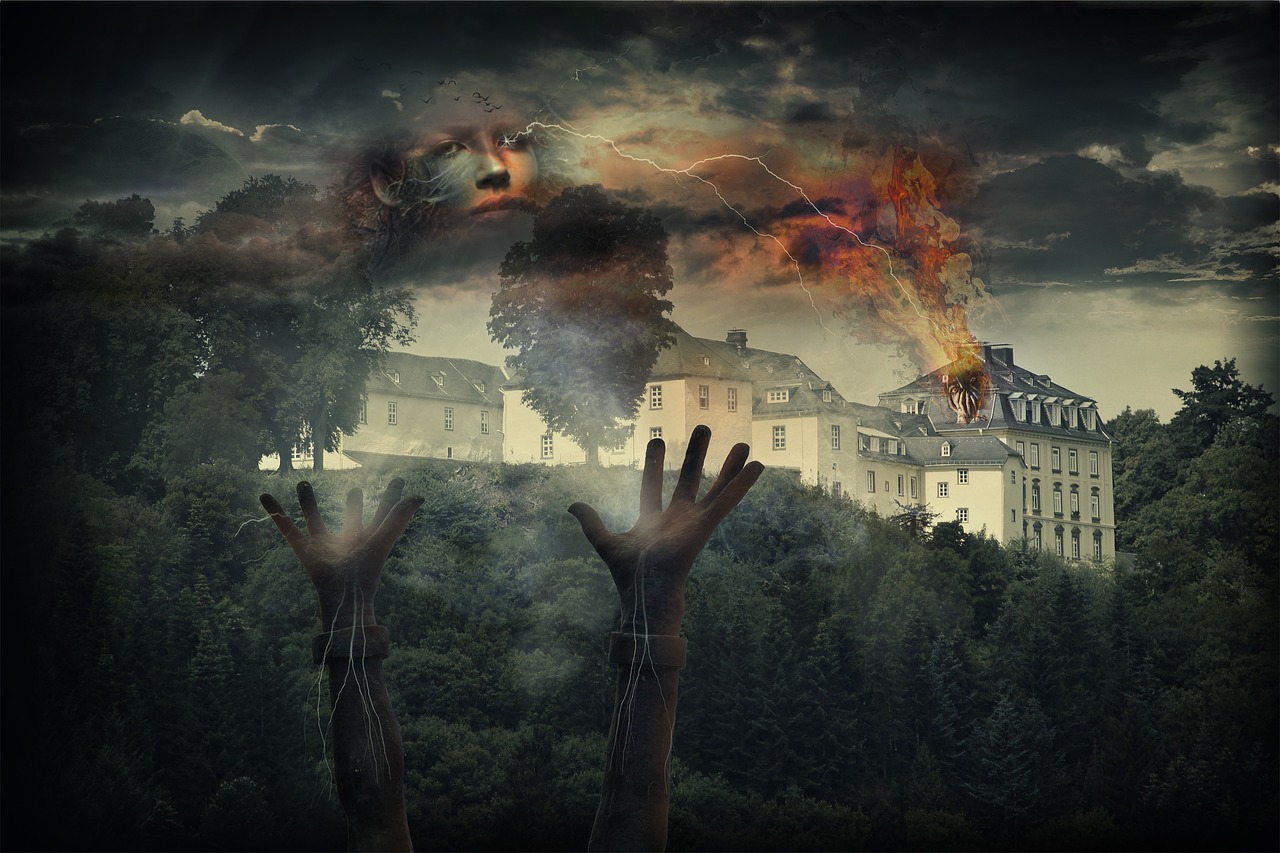
Ethics and Aesthetics in the Tractatus
In the Tractatus Logico-Philosophicus, Ludwig Wittgenstein ventures into the realms of ethics and aesthetics, suggesting that these dimensions of human experience are not merely extensions of logical propositions but rather transcendental elements that evade strict logical analysis. He posits that while we can articulate facts about the world through language, the profound truths of ethics and aesthetics lie beyond the grasp of logical expression. This notion raises intriguing questions: How do we communicate what is fundamentally valuable or beautiful? Can language ever fully encapsulate the essence of moral or aesthetic experiences?
Wittgenstein's perspective implies that ethical and aesthetic judgments are deeply personal and subjective, rooted in the individual’s experiences and feelings. He famously notes that these areas are best approached through silence rather than through the rigid structures of language. This leads us to consider the implications of his assertion: if we cannot adequately express ethical or aesthetic truths, does that mean they are ineffable? Or perhaps, they exist in a realm where meaning transcends the limitations of words?
To illustrate this, consider the following aspects of ethics and aesthetics as described in the Tractatus:
- Ethical Values: Wittgenstein suggests that ethical values are not empirical truths but rather reflections of our deepest convictions and life choices.
- Aesthetic Experience: Aesthetic appreciation is portrayed as a deeply personal experience, shaped by individual perception and cultural context, which cannot be universally defined.
- Transcendence: Both ethics and aesthetics are presented as transcending the limits of language, existing in a space where logical propositions fail to reach.
This transcendental view invites us to reflect on our own experiences of beauty and morality. When we encounter a piece of art that moves us or a moral dilemma that challenges our values, we often find ourselves at a loss for words. Wittgenstein’s insights remind us that perhaps the most profound truths in life are those that elude verbal articulation, residing instead in the silent spaces between our thoughts and feelings.
In essence, Wittgenstein's exploration of ethics and aesthetics in the Tractatus serves as a poignant reminder of the limitations of language. It challenges us to embrace the complexity of human experience and to recognize that some of the most significant aspects of our lives may lie beyond the confines of logical discourse. By acknowledging the ineffable nature of ethics and aesthetics, we open ourselves to a richer understanding of what it means to be human—a journey that is as much about feeling and intuition as it is about reason and logic.
- What is the main argument of Wittgenstein's Tractatus regarding ethics?
Wittgenstein argues that ethical values transcend logical expression and are deeply rooted in individual experiences.
- How does Wittgenstein view aesthetics in the Tractatus?
He suggests that aesthetic experiences are subjective and cannot be fully captured through language, emphasizing their personal nature.
- Why does Wittgenstein believe some truths cannot be spoken?
He posits that certain truths, particularly in ethics and aesthetics, reside beyond the limits of language and are better approached through silence.

Tractatus.
This article explores the key concepts and implications of Wittgenstein's Tractatus Logico-Philosophicus, examining its influence on philosophy and language, as well as its enduring relevance in contemporary thought.
The Tractatus presents a unique perspective on language and reality. This section discusses its structure, main arguments, and the philosophical questions it aims to address, providing a foundation for deeper exploration.
Wittgenstein's work is rich with themes such as the limits of language, the nature of truth, and the relationship between language and the world. This section highlights these central ideas and their implications.
One of the core concepts in the Tractatus is the picture theory, which suggests that language represents reality through logical pictures. This section delves into how this theory shapes our understanding of meaning.
Wittgenstein argues that the structure of language mirrors the structure of reality. This subsection examines how this relationship is articulated in the Tractatus and its philosophical significance.
Wittgenstein famously asserts that whereof one cannot speak, thereof one must be silent. This part explores the implications of this claim for philosophical inquiry and the boundaries of language.
Wittgenstein touches on ethical and aesthetic dimensions, suggesting that these areas transcend logical expression. This section investigates how these themes are treated within the framework of the Tractatus.
The Tractatus has profoundly impacted the development of analytic philosophy. This section discusses its influence on subsequent thinkers and movements, shaping discussions around language, logic, and meaning.
The reception of the Tractatus has been varied, with both acclaim and criticism. This part analyzes key critiques and how they have contributed to ongoing debates in philosophy.
Wittgenstein's Tractatus continues to resonate in contemporary discussions about language and meaning. This section highlights its lasting legacy and relevance in modern philosophical discourse.
- What is the main argument of the Tractatus?
The main argument of the Tractatus revolves around the idea that the structure of language reflects the structure of reality, proposing that language serves as a logical picture of facts. - How does Wittgenstein define the limits of language?
Wittgenstein famously states, "Whereof one cannot speak, thereof one must be silent," indicating that there are boundaries to what can be expressed meaningfully in language. - What impact did the Tractatus have on philosophy?
The Tractatus significantly influenced the development of analytic philosophy, prompting discussions on the nature of language, meaning, and the relationship between language and reality. - Are ethics and aesthetics discussed in the Tractatus?
Yes, Wittgenstein briefly addresses ethical and aesthetic dimensions, suggesting that these aspects go beyond what can be logically expressed.
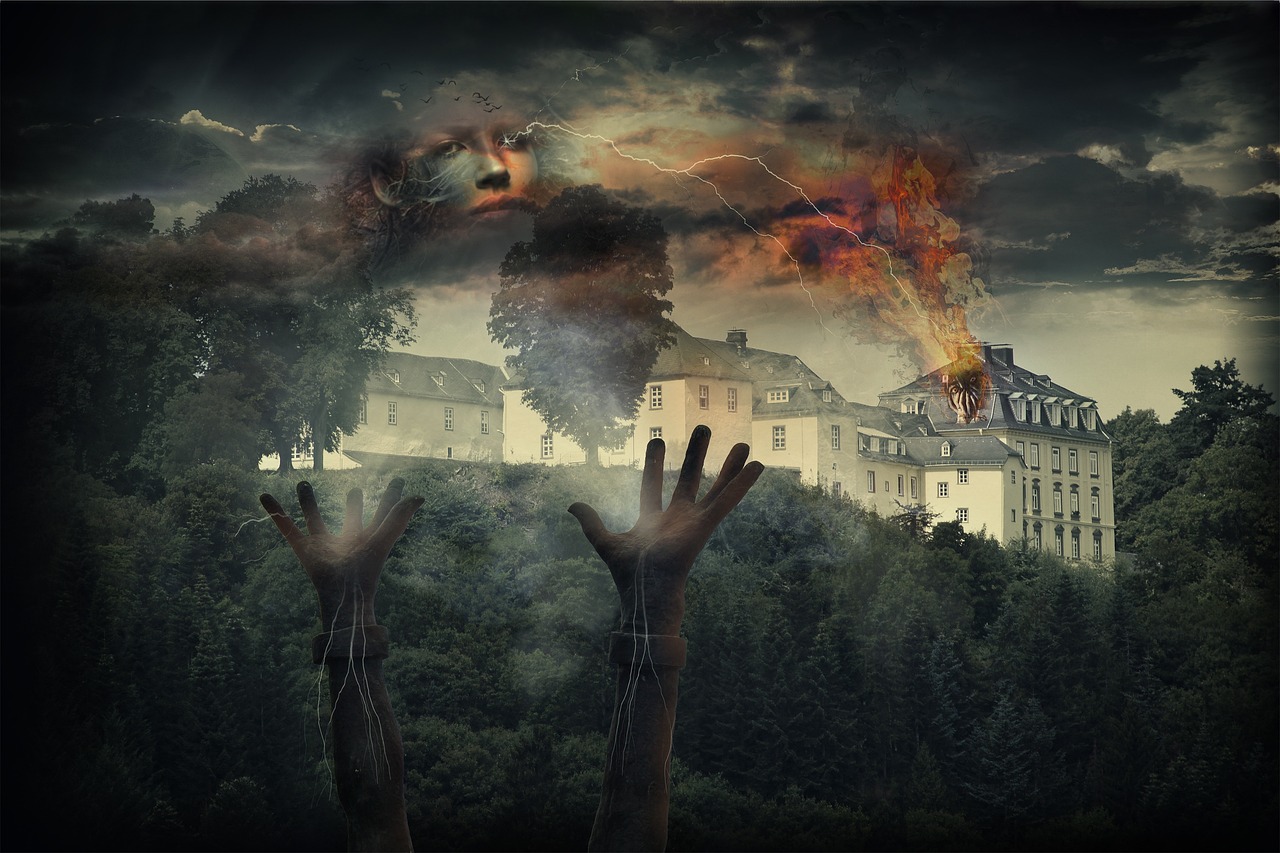
This article explores the key concepts and implications of Wittgenstein's Tractatus Logico-Philosophicus, examining its influence on philosophy and language, as well as its enduring relevance in contemporary thought.
The Tractatus presents a unique perspective on language and reality. Wittgenstein structured his work in a way that reflects his philosophical inquiries. It is divided into several propositions that build upon one another, culminating in a profound exploration of how we communicate and understand the world. At its core, the Tractatus aims to address some of the most fundamental philosophical questions: What can be said? What can be shown? And where do the limits of language lie? This foundational exploration sets the stage for a deeper dive into the intricate ideas that Wittgenstein presents.
Wittgenstein's work is rich with themes such as the limits of language, the nature of truth, and the relationship between language and the world. These central ideas are not just abstract concepts; they have profound implications for how we perceive reality and interact with one another. For example, the limits of language suggest that there are aspects of human experience that elude verbal expression, prompting us to consider the ineffable nature of certain truths. This notion challenges us to reflect on how we communicate and understand our experiences, pushing the boundaries of traditional linguistic frameworks.
One of the core concepts in the Tractatus is the picture theory, which suggests that language represents reality through logical pictures. This theory posits that words and sentences function as models of the world, allowing us to depict states of affairs. For instance, when we say "The cat is on the mat," we create a mental image that corresponds to a specific situation in reality. This relationship between language and reality shapes our understanding of meaning, as it implies that the clarity of our thoughts is intrinsically linked to the structure of our language.
Wittgenstein argues that the structure of language mirrors the structure of reality. This profound assertion leads us to consider how our linguistic constructs reflect the world around us. In the Tractatus, Wittgenstein meticulously outlines how logical form is essential for meaningful propositions. He asserts that a well-structured sentence can accurately depict a possible state of affairs, thus bridging the gap between language and reality. This relationship is not merely theoretical; it has significant philosophical implications for how we understand truth and meaning in our daily lives.
Wittgenstein famously asserts that “whereof one cannot speak, thereof one must be silent.” This statement encapsulates the implications of his work regarding the boundaries of language. It challenges us to recognize that there are dimensions of human experience—such as emotions, ethics, and metaphysics—that may resist verbal articulation. By acknowledging these limits, Wittgenstein invites us to explore the realms of silence and the unsayable, encouraging a deeper appreciation for the complexities of human existence.
Wittgenstein touches on ethical and aesthetic dimensions, suggesting that these areas transcend logical expression. In the Tractatus, he implies that while we can discuss facts and propositions, the realm of ethics and aesthetics operates on a different plane. These themes are treated within the framework of the Tractatus as aspects of life that elude strict logical analysis. They remind us that some truths are felt rather than articulated, urging us to consider the richness of human experience beyond the confines of language.
The Tractatus has profoundly impacted the development of analytic philosophy. Its rigorous approach to language and logic has shaped discussions around meaning and interpretation, influencing notable thinkers and movements. The clarity and precision of Wittgenstein's arguments have inspired generations of philosophers to delve deeper into the intricacies of language, logic, and their interrelations. This influence is evident in the works of later philosophers who grappled with the implications of Wittgenstein's ideas, further enriching the landscape of philosophical inquiry.
The reception of the Tractatus has been varied, with both acclaim and criticism. Some scholars hail it as a groundbreaking work that redefined the landscape of philosophy, while others critique its limitations and the challenges it poses to traditional philosophical discourse. Key critiques often focus on the perceived rigidity of Wittgenstein's picture theory and its implications for understanding complex human experiences. These debates have contributed to ongoing discussions in philosophy, fostering a rich dialogue that continues to evolve.
Wittgenstein's Tractatus continues to resonate in contemporary discussions about language and meaning. Its enduring legacy is reflected in the ongoing relevance of its themes in modern philosophical discourse. As we navigate an increasingly complex world, the questions raised by Wittgenstein about the nature of language, truth, and reality remain crucial. The Tractatus serves as a reminder of the power and limitations of language, urging us to reflect on how we communicate and understand our experiences in a rapidly changing landscape.
- What is the main idea of the Tractatus? The main idea of the Tractatus is that the structure of language reflects the structure of reality, and it explores the limits of what can be meaningfully said.
- How did the Tractatus influence philosophy? The Tractatus influenced philosophy by shaping the development of analytic philosophy, particularly in discussions about language, logic, and meaning.
- What does Wittgenstein mean by "whereof one cannot speak, thereof one must be silent"? This statement emphasizes the idea that there are aspects of human experience that cannot be adequately expressed in language.
- Are ethics and aesthetics addressed in the Tractatus? Yes, Wittgenstein discusses ethics and aesthetics as areas that transcend logical expression, suggesting they operate on a different level of understanding.

Influence on Analytic Philosophy
The impact of Ludwig Wittgenstein's Tractatus Logico-Philosophicus on the field of analytic philosophy cannot be overstated. It has acted as a catalyst for a multitude of discussions surrounding language, logic, and meaning. Wittgenstein's ideas have not only shaped the trajectory of 20th-century philosophy but have also inspired a wave of thinkers to grapple with the complexities of how language interacts with our understanding of reality. In essence, the Tractatus serves as both a foundation and a challenge, pushing philosophers to reconsider their approaches to these fundamental questions.
One of the most notable influences of the Tractatus is its role in the development of the logical positivism movement. Philosophers such as the members of the Vienna Circle drew heavily from Wittgenstein's work, particularly his assertion that meaningful statements must be either empirically verifiable or logically necessary. This principle became a cornerstone of logical positivism, which sought to eliminate metaphysics from philosophy and focus on language that could be tested and validated.
Furthermore, Wittgenstein's emphasis on the structure of language as a reflection of reality has led to significant discussions regarding the philosophy of language. His assertion that "the limits of my language mean the limits of my world" has prompted philosophers to explore the implications of linguistic relativity and the ways in which our language shapes our thoughts and experiences. This idea resonates with contemporary debates in linguistics and cognitive science, where the relationship between language and thought remains a hot topic.
To illustrate the influence of the Tractatus on analytic philosophy, consider the following table that highlights key philosophers and their contributions influenced by Wittgenstein's ideas:
| Philosopher | Contribution |
|---|---|
| Rudolf Carnap | Developed the principle of verification and emphasized the importance of language in scientific discourse. |
| Willard Van Orman Quine | Challenged the distinction between analytic and synthetic statements, expanding on the implications of Wittgenstein's work. |
| Gilbert Ryle | Critiqued the traditional view of mental states, using Wittgenstein's ideas to argue for a more behaviorist approach. |
Despite its profound influence, the reception of the Tractatus has not been without controversy. Critics argue that its rigid structure and focus on logic can lead to an overly simplistic view of language and meaning. However, this very criticism has fueled ongoing debates, prompting philosophers to refine their theories and explore the nuances of language in ways that Wittgenstein may not have anticipated.
In summary, the Tractatus Logico-Philosophicus has left an indelible mark on the landscape of analytic philosophy. Its exploration of language and reality continues to inspire and challenge contemporary thinkers, ensuring that Wittgenstein's legacy endures in the heart of philosophical inquiry.
- What is the main idea of Wittgenstein's Tractatus?
The main idea is that language serves as a representation of reality, and understanding this relationship is crucial for philosophical inquiry. - How did the Tractatus influence logical positivism?
The Tractatus provided a framework for logical positivists to argue that meaningful statements must be verifiable or logically necessary. - What are some criticisms of the Tractatus?
Critics argue that its focus on logic and structure oversimplifies the complexities of language and meaning.

Tractatus
This article explores the key concepts and implications of Wittgenstein's Tractatus Logico-Philosophicus, examining its influence on philosophy and language, as well as its enduring relevance in contemporary thought.
The presents a unique perspective on language and reality. At its core, this work is structured in a way that reflects Wittgenstein’s belief that the world can be understood through logical propositions. The book is divided into a series of numbered statements, each building upon the previous one, like a carefully constructed house of cards. This structure serves not just as a framework for his arguments, but also as a reflection of his philosophical methodology, which emphasizes clarity and precision in language. Wittgenstein aims to address profound philosophical questions such as: What is the relationship between language and the world? How do we convey meaning? And what are the limits of our understanding?
Wittgenstein's work is rich with themes such as the limits of language, the nature of truth, and the relationship between language and the world. Each of these themes invites readers to ponder the fundamental nature of reality and our ability to articulate it. For instance, the limits of language suggest that there are aspects of existence that elude verbal expression, prompting a deeper inquiry into the nature of meaning itself. The is not merely a philosophical text; it is a challenge to the reader to reflect on their own understanding of language and reality.
One of the core concepts in the is the picture theory, which suggests that language represents reality through logical pictures. Wittgenstein posits that a proposition can be seen as a picture of a state of affairs, meaning that words and sentences function as models of the world. This idea reshapes our understanding of meaning, suggesting that to understand a statement, we must visualize the scenario it describes. For example, when we say, "The cat is on the mat," we create a mental image that corresponds to the actual state of affairs. This theory is not just an abstract notion; it fundamentally alters how we interpret communication and the exchange of ideas.
Wittgenstein argues that the structure of language mirrors the structure of reality. This relationship is articulated through the idea that the logical form of a proposition must align with the reality it represents. In essence, he suggests that language is not arbitrary; rather, it is inherently linked to the world. This philosophical significance lies in the notion that understanding language involves recognizing the logical connections between words and the realities they depict. It’s like constructing a map where every landmark corresponds accurately to its real-world counterpart.
Wittgenstein famously asserts that “whereof one cannot speak, thereof one must be silent.” This poignant claim underscores the implications of language's limitations for philosophical inquiry. It challenges us to consider the boundaries of what can be expressed and understood. If certain experiences or concepts lie beyond the reach of language, should we remain silent about them? This question invites a rich discussion about the role of silence in philosophy and the acknowledgment of ineffable experiences. It’s a reminder that sometimes, the most profound truths are found not in words, but in the spaces between them.
Wittgenstein touches on ethical and aesthetic dimensions, suggesting that these areas transcend logical expression. He implies that while we can discuss facts and propositions through language, the realms of ethics and aesthetics often elude strict logical analysis. This perspective leads us to consider the subjective nature of beauty and morality, which cannot be fully captured by propositional language. Instead, they exist in a realm that is felt and experienced, rather than articulated. The thus invites us to explore the boundaries of language and the rich, often unspoken, dimensions of human experience.
The has profoundly impacted the development of analytic philosophy. Its influence can be seen in the works of many subsequent thinkers who grappled with the implications of Wittgenstein's ideas. This section discusses its influence on subsequent thinkers and movements, shaping discussions around language, logic, and meaning.
The reception of the has been varied, with both acclaim and criticism. Critics have often pointed out its perceived limitations and the challenges it poses for understanding complex philosophical issues. This part analyzes key critiques and how they have contributed to ongoing debates in philosophy.
Wittgenstein's continues to resonate in contemporary discussions about language and meaning. Its ideas have permeated various fields, including linguistics, cognitive science, and even art. This section highlights its lasting legacy and relevance in modern philosophical discourse.
- What is the main idea of the Tractatus? The main idea is that language represents reality through logical propositions, which can be understood as pictures of states of affairs.
- How does Wittgenstein define the limits of language? Wittgenstein asserts that there are some things that cannot be expressed in language, leading to the conclusion that silence is appropriate in those cases.
- What is the significance of the picture theory? The picture theory suggests that propositions can represent reality, shaping our understanding of meaning and communication.
- How has the Tractatus influenced modern philosophy? The Tractatus has had a significant impact on analytic philosophy, influencing discussions on language, logic, and meaning.

has profoundly impacted the development of analytic philosophy. This section discusses its influence on subsequent thinkers and movements, shaping discussions around language, logic, and meaning.
This article explores the key concepts and implications of Wittgenstein's Tractatus Logico-Philosophicus, examining its influence on philosophy and language, as well as its enduring relevance in contemporary thought.
The Tractatus presents a unique perspective on language and reality. This section discusses its structure, main arguments, and the philosophical questions it aims to address, providing a foundation for deeper exploration.
Wittgenstein's work is rich with themes such as the limits of language, the nature of truth, and the relationship between language and the world. This section highlights these central ideas and their implications.
One of the core concepts in the Tractatus is the picture theory, which suggests that language represents reality through logical pictures. This section delves into how this theory shapes our understanding of meaning.
Wittgenstein argues that the structure of language mirrors the structure of reality. This subsection examines how this relationship is articulated in the Tractatus and its philosophical significance.
Wittgenstein famously asserts that whereof one cannot speak, thereof one must be silent. This part explores the implications of this claim for philosophical inquiry and the boundaries of language.
Wittgenstein touches on ethical and aesthetic dimensions, suggesting that these areas transcend logical expression. This section investigates how these themes are treated within the framework of the Tractatus.
The Tractatus has profoundly impacted the development of analytic philosophy. Its influence can be seen in the works of numerous subsequent thinkers who have built upon or reacted against Wittgenstein's ideas. For instance, philosophers like Bertrand Russell and G.E. Moore were pivotal in shaping the landscape of analytic philosophy, and they were both influenced by Wittgenstein's early work. The Tractatus opened up discussions about the nature of language, leading to a more rigorous examination of how language relates to logic and meaning.
Moreover, the Tractatus has inspired various movements within analytic philosophy, particularly in the realms of logical positivism and ordinary language philosophy. These movements sought to clarify philosophical problems by focusing on language and its usage. The logical positivists, for example, adopted Wittgenstein's ideas to argue that many philosophical statements are meaningless unless they can be empirically verified. This perspective shifted the focus of philosophy towards a more scientific approach, emphasizing clarity and precision.
In addition, Wittgenstein's work has sparked ongoing debates about the relationship between language and reality. His assertion that language shapes our understanding of the world has led to a reevaluation of how we approach philosophical questions. The implications of this idea are profound, as they challenge us to consider the limitations of our own language and how it constrains our thoughts and expressions.
To summarize, the Tractatus has not only influenced individual philosophers but has also shaped entire philosophical movements. Its legacy is evident in the way contemporary discussions around language, logic, and meaning continue to evolve. The following table illustrates some of the key thinkers influenced by the Tractatus:
| Philosopher | Contribution |
|---|---|
| Bertrand Russell | Developed theories of logical atomism. |
| G.E. Moore | Pioneered discussions on common sense and ethical theory. |
| Rudolf Carnap | Prominent figure in logical positivism. |
| J.L. Austin | Founded ordinary language philosophy. |
The reception of the Tractatus has been varied, with both acclaim and criticism. This part analyzes key critiques and how they have contributed to ongoing debates in philosophy.
Wittgenstein's Tractatus continues to resonate in contemporary discussions about language and meaning. This section highlights its lasting legacy and relevance in modern philosophical discourse.
- What is the main argument of the Tractatus?
The main argument is that the structure of language reflects the structure of reality, and that meaningful statements can only be made about facts that can be logically represented.
- How did the Tractatus influence analytic philosophy?
The Tractatus influenced analytic philosophy by shaping discussions around language, logic, and meaning, leading to movements like logical positivism and ordinary language philosophy.
- What are the limits of language according to Wittgenstein?
Wittgenstein argues that language has limits; there are things that cannot be adequately expressed in words, which leads to his famous assertion that we must remain silent about those matters.

Reception and Criticism
The reception of Wittgenstein's Tractatus Logico-Philosophicus has been a rollercoaster ride, marked by both fervent admiration and pointed criticism. When it was first published in 1921, the Tractatus was hailed by some as a groundbreaking work that would change the landscape of philosophy forever. Its intricate arguments about language and reality struck a chord with many, particularly among early analytic philosophers. However, as time went on, the text also faced its share of skepticism and critique.
One of the most prominent figures to engage with Wittgenstein's ideas was Bertand Russell, who initially recognized the brilliance of the work but later expressed concerns about its implications. Russell argued that while the Tractatus provided a novel approach to language, it also risked oversimplifying the complexities of human thought and experience. This brings us to a critical point: the tension between the clarity that the Tractatus seeks to achieve and the messy realities of everyday language use.
Critics like Friedrich Waismann and John Wisdom pointed out that Wittgenstein's strict separation of language and reality might lead to an overly rigid understanding of meaning. They argued that language is not merely a set of logical pictures but a living, breathing tool shaped by social interactions and cultural contexts. This brings us to the heart of the debate: how do we reconcile the idealized structures of language that Wittgenstein proposes with the chaotic, often ambiguous nature of actual communication?
Furthermore, the Tractatus sparked discussions about the limits of language. Wittgenstein's assertion that "whereof one cannot speak, thereof one must be silent" has been both celebrated and criticized. Some see it as a profound insight into the nature of philosophical inquiry, suggesting that certain questions may be beyond the reach of human language. Others, however, argue that this stance could stifle meaningful discourse, particularly in areas like ethics and aesthetics, where language often struggles to capture the full depth of human experience.
Despite the criticisms, the Tractatus has undeniably left a lasting mark on the field of philosophy. Its influence can be seen in the works of later thinkers such as Rudolf Carnap and the Vienna Circle, who incorporated Wittgenstein's ideas into their own discussions on logical positivism. Moreover, the ongoing debates surrounding the Tractatus have fostered a rich dialogue within philosophy, illustrating how a single work can inspire both admiration and critique.
In summary, the reception of the Tractatus is a testament to its complexity and the profound questions it raises. While some celebrate its clarity and logical rigor, others caution against its potential limitations. This duality is what makes the Tractatus not just a philosophical text, but a living document that continues to provoke thought and discussion in contemporary philosophy.
- What is the main argument of the Tractatus?
The main argument of the Tractatus is that the structure of language reflects the structure of reality, and that meaningful statements can only be made about facts that can be logically represented. - Why is the Tractatus considered difficult to understand?
The Tractatus is considered difficult due to its dense logical structure and the abstract nature of its arguments, which challenge conventional ways of thinking about language and meaning. - How did Wittgenstein's ideas influence modern philosophy?
Wittgenstein's ideas influenced modern philosophy by shaping discussions around language, logic, and meaning, particularly within the analytic tradition, prompting philosophers to reconsider the role of language in philosophical inquiry.

Tractatus
This article explores the key concepts and implications of Wittgenstein's Tractatus Logico-Philosophicus, examining its influence on philosophy and language, as well as its enduring relevance in contemporary thought.
The presents a unique perspective on language and reality. At its core, Wittgenstein seeks to unravel the complexities of how we communicate and how our words relate to the world around us. The structure of the work is fascinating; it consists of numbered propositions that build upon one another, leading the reader through a logical journey. Each statement is carefully crafted, designed to peel back the layers of meaning and expose the underlying truths about our linguistic practices. Wittgenstein's aim is not just to explore philosophical questions but also to provide a framework for understanding the limits of language itself. By doing so, he lays the groundwork for deeper exploration into the nature of truth and the relationship between language and reality.
Wittgenstein's work is rich with themes such as the limits of language, the nature of truth, and the relationship between language and the world. One key idea is that language is not merely a tool for communication; it is a representation of reality. This notion leads to profound implications about how we perceive the world and express our thoughts. For instance, can we ever truly capture the essence of our experiences through words? Or are we forever bound by the constraints of our language? Wittgenstein challenges us to consider these questions seriously.
One of the core concepts in the is the picture theory, which suggests that language represents reality through logical pictures. According to Wittgenstein, sentences function as pictures of states of affairs in the world. This means that the structure of a sentence reflects the structure of the reality it describes. For example, if we say, "The cat is on the mat," we are creating a mental image that corresponds to a specific arrangement of objects in the world. This theory profoundly shapes our understanding of meaning, as it implies that the clarity of our thoughts is directly linked to the clarity of our language.
Wittgenstein argues that the structure of language mirrors the structure of reality. This relationship is articulated through the use of logical propositions, which serve as a bridge between our thoughts and the world around us. The idea is that if our language is logically structured, it can accurately depict the world. This brings us to a crucial point: if our language fails to capture the logical structure of reality, then we are left with confusion and misunderstanding. Thus, the pushes us to refine our language to better reflect the world, leading to clearer communication and deeper understanding.
Wittgenstein famously asserts that, "whereof one cannot speak, thereof one must be silent." This powerful statement emphasizes the limitations of language in articulating certain aspects of human experience. It suggests that there are realms of existence—such as ethics, aesthetics, and metaphysics—that defy logical expression. This part of the invites us to consider the implications of these limitations for philosophical inquiry. If language has boundaries, what does that mean for our pursuit of knowledge and understanding? Are there truths that remain forever beyond our grasp?
Wittgenstein touches on ethical and aesthetic dimensions, suggesting that these areas transcend logical expression. He implies that while we can discuss facts and propositions, the deeper meanings of ethics and aesthetics lie outside the realm of language. This leads to a fascinating exploration of how we navigate these concepts in our lives. How do we communicate our values and experiences of beauty? The challenges us to reflect on the limitations of our words when it comes to expressing what truly matters.
The has profoundly impacted the development of analytic philosophy. Its rigorous approach to language and meaning has influenced countless thinkers and movements, shaping discussions around logic and communication. The clarity and precision of Wittgenstein's arguments have paved the way for a new era of philosophical inquiry, where language is seen as a critical component of understanding reality.
The reception of the has been varied, with both acclaim and criticism. Some philosophers have embraced Wittgenstein's insights, while others have challenged his conclusions. This part of the article analyzes key critiques and how they have contributed to ongoing debates in philosophy. The discussions surrounding the highlight the complexities of language and meaning, demonstrating that even the most profound ideas can be met with skepticism.
Wittgenstein's continues to resonate in contemporary discussions about language and meaning. Its lasting legacy can be seen in various fields, from linguistics to cognitive science. The questions it raises about the nature of truth and the limits of expression remain relevant today, challenging us to rethink our understanding of communication and reality. As we navigate an increasingly complex world, the insights from the serve as a guiding light, encouraging us to explore the depths of our language and the meanings we create.
- What is the main idea of the Tractatus? The explores the relationship between language and reality, proposing that language serves as a representation of the world.
- How does the picture theory of language work? Wittgenstein's picture theory suggests that sentences function as logical pictures that correspond to states of affairs in reality.
- What are the limits of language according to Wittgenstein? Wittgenstein argues that there are aspects of human experience, such as ethics and aesthetics, that cannot be adequately expressed through language.
- What impact has the Tractatus had on philosophy? The has significantly influenced analytic philosophy, shaping discussions around language, logic, and meaning.

has been varied, with both acclaim and criticism. This part analyzes key critiques and how they have contributed to ongoing debates in philosophy.
The reception of Ludwig Wittgenstein's Tractatus Logico-Philosophicus has been a fascinating journey through the realms of philosophy, marked by both acclaim and criticism. When it was first published in 1921, many philosophers praised it for its innovative approach to the relationship between language and reality. Its concise, aphoristic style captivated readers and sparked a flurry of intellectual debates. However, not everyone was enamored with Wittgenstein’s ideas. Critics emerged, questioning the very foundations of his arguments and the implications they carried for philosophical inquiry.
One of the most notable critiques came from the Vienna Circle, a group of philosophers and scientists who were instrumental in developing logical positivism. They appreciated the Tractatus for its logical rigor but criticized its limitations, particularly regarding its treatment of ethical and aesthetic dimensions. They argued that Wittgenstein's assertion that ethical propositions are nonsensical undermined the importance of moral discourse. This contention led to a significant debate about the role of language in expressing values and meanings beyond mere factual statements.
Another key figure in the critique of the Tractatus was Martin Heidegger, who took issue with Wittgenstein's emphasis on language as a mere representation of reality. Heidegger argued that this perspective neglected the deeper existential questions of being and understanding. He believed that language should be viewed as a way of revealing our relationship with the world, rather than simply as a tool for depicting it. This philosophical divergence prompted further discussions about the nature of language and its implications for our understanding of existence.
Moreover, the Tractatus has faced criticism for its perceived absolutism regarding the limits of language. Wittgenstein famously stated, "Whereof one cannot speak, thereof one must be silent." Critics have argued that this stance creates an artificial boundary that stifles philosophical exploration. They contend that silence on certain topics does not equate to their non-existence or irrelevance, but rather reflects the limitations of our current understanding. This critique has fueled ongoing debates about the scope of philosophical inquiry and the role of language in addressing complex issues.
The discussions ignited by the Tractatus have not only shaped the trajectory of analytic philosophy but also influenced various fields, including linguistics, cognitive science, and even artificial intelligence. The questions raised by Wittgenstein's work continue to resonate, inviting scholars to explore the intricate relationship between language, thought, and reality. As such, the Tractatus remains a pivotal text that challenges us to reconsider our assumptions about meaning and communication.
In summary, the reception of the Tractatus has been a rich tapestry of acclaim and criticism, each contributing to a broader understanding of its philosophical significance. The critiques have not only highlighted the text's limitations but also sparked vibrant discussions that continue to shape contemporary philosophical discourse.
- What is the main argument of the Tractatus?
The main argument of the Tractatus revolves around the idea that language represents reality through logical pictures, and it explores the limits of what can be meaningfully said.
- How has the Tractatus influenced modern philosophy?
The Tractatus laid the groundwork for analytic philosophy, influencing discussions about language, logic, and meaning that continue to this day.
- What are some key criticisms of the Tractatus?
Key criticisms include its treatment of ethics and aesthetics as nonsensical, its absolutism regarding the limits of language, and its perceived neglect of existential questions.

Legacy and Contemporary Relevance
The legacy of Ludwig Wittgenstein's Tractatus Logico-Philosophicus is as profound as it is multifaceted. Since its publication, the Tractatus has not only shaped the landscape of 20th-century philosophy but has also left an indelible mark on various fields, including linguistics, cognitive science, and artificial intelligence. Its influence can be traced through the works of numerous philosophers who have grappled with its ideas, whether in agreement or opposition. This intellectual tug-of-war has kept the Tractatus alive in contemporary discourse, inviting new interpretations and applications.
One of the most significant aspects of Wittgenstein's legacy is his challenge to the idea of meaning. The notion that language is a picture of reality has sparked ongoing debates about how we understand communication and knowledge. In today's world, where the boundaries of language are constantly tested by technology and globalization, the Tractatus serves as a crucial reference point. It compels us to ask: What does it mean to convey meaning in an increasingly complex world?
Furthermore, the ethical and aesthetic dimensions that Wittgenstein touches upon in the Tractatus also resonate today. His assertion that some aspects of human experience transcend logical expression invites a reevaluation of how we perceive art, morality, and even politics. In an age where the digital realm often oversimplifies complex human emotions and interactions, Wittgenstein's insights prompt us to consider the limitations of our language in expressing the full spectrum of human experience.
To illustrate the ongoing relevance of the Tractatus, consider the following table that outlines key areas influenced by Wittgenstein's work:
| Field | Influence of the Tractatus |
|---|---|
| Philosophy | Shaped discussions around language, meaning, and the nature of reality. |
| Linguistics | Influenced theories on the relationship between language and thought. |
| Cognitive Science | Inspired research on how language shapes human cognition and perception. |
| Artificial Intelligence | Raised questions about the limits of machine understanding and representation. |
As we navigate the complexities of modern life, the Tractatus remains a beacon, urging us to confront the challenges of language and its limitations. It invites us to explore the depths of our communication and to acknowledge the unutterable aspects of our experiences. Wittgenstein’s work encourages a humble approach to philosophical inquiry—one that recognizes the boundaries of our understanding while simultaneously pushing us to explore beyond them.
In summary, the lasting impact of the Tractatus Logico-Philosophicus is evident not just in philosophical circles but across various domains of human thought. Its themes continue to inspire new generations of thinkers, reminding us that the quest for meaning is as relevant today as it was in Wittgenstein's time.
- What is the main argument of the Tractatus? The main argument revolves around the idea that language represents reality through logical structures, and it explores the limits of what can be meaningfully said.
- How has the Tractatus influenced modern philosophy? The Tractatus has influenced modern philosophy by shaping discussions around language, logic, and the nature of meaning, impacting various philosophical movements, especially in analytic philosophy.
- Why is the Tractatus still relevant today? The Tractatus remains relevant as it addresses fundamental questions about language, meaning, and human experience, which continue to resonate in contemporary discussions across multiple disciplines.

Tractatus
This article explores the key concepts and implications of Wittgenstein's Tractatus Logico-Philosophicus, examining its influence on philosophy and language, as well as its enduring relevance in contemporary thought.
The presents a unique perspective on language and reality. This section discusses its structure, main arguments, and the philosophical questions it aims to address, providing a foundation for deeper exploration. Wittgenstein's work is divided into seven main propositions, each building upon the previous one, creating a logical structure that mirrors the world itself. The is not just a book; it’s a journey through the intricacies of language, thought, and existence. It challenges readers to rethink their assumptions about how language interacts with the world around us.
Wittgenstein's work is rich with themes such as the limits of language, the nature of truth, and the relationship between language and the world. This section highlights these central ideas and their implications. One of the most profound realizations one encounters in the is the notion that language is not merely a tool for communication but a framework that shapes our understanding of reality. The implications of this are vast, leading us to question how much of our reality is constructed through the language we use.
One of the core concepts in the is the picture theory, which suggests that language represents reality through logical pictures. This section delves into how this theory shapes our understanding of meaning. According to Wittgenstein, words are like pictures; they have a structure that reflects the state of affairs they represent. This analogy helps clarify how we can use language to convey complex ideas and emotions. In essence, every meaningful statement is a picture of a possible situation in the world, making language a powerful tool for representation.
Wittgenstein argues that the structure of language mirrors the structure of reality. This subsection examines how this relationship is articulated in the and its philosophical significance. He posits that just as a picture can depict a fact, so too can a proposition represent a state of affairs. This idea leads to the understanding that the limits of our language are also the limits of our world. In other words, if we cannot describe something, we cannot comprehend it fully. This notion compels us to reflect on the boundaries of our understanding and the power of language in shaping our perceptions.
Wittgenstein famously asserts that “whereof one cannot speak, thereof one must be silent.” This part explores the implications of this claim for philosophical inquiry and the boundaries of language. This statement serves as a profound reminder that there are areas of human experience that transcend linguistic expression. When we encounter the ineffable—such as emotions, ethics, and aesthetics—we often find ourselves at a loss for words. This realization invites us to consider the limitations of language and encourages a deeper exploration of those aspects of life that elude verbal articulation.
Wittgenstein touches on ethical and aesthetic dimensions, suggesting that these areas transcend logical expression. This section investigates how these themes are treated within the framework of the . While the work primarily focuses on the logical structure of language, Wittgenstein acknowledges that ethics and aesthetics occupy a special place in human experience. He implies that these realms, rich with meaning and significance, go beyond the confines of logical reasoning. In doing so, he opens the door to a more nuanced understanding of how we engage with the world on an emotional and moral level.
The has profoundly impacted the development of analytic philosophy. This section discusses its influence on subsequent thinkers and movements, shaping discussions around language, logic, and meaning. Wittgenstein's ideas have sparked debates that continue to resonate in contemporary philosophical discussions. His work laid the groundwork for later philosophers who grappled with the nature of language and its relationship to reality, making the a cornerstone of modern thought.
The reception of the has been varied, with both acclaim and criticism. This part analyzes key critiques and how they have contributed to ongoing debates in philosophy. Some have praised Wittgenstein for his innovative approach, while others have found his conclusions overly restrictive. This tension between appreciation and critique has fueled a rich dialogue within philosophical circles, demonstrating the 's enduring relevance and the complexity of its ideas.
Wittgenstein's continues to resonate in contemporary discussions about language and meaning. This section highlights its lasting legacy and relevance in modern philosophical discourse. As we navigate an increasingly complex world, the insights offered by the serve as a reminder of the profound connection between language, thought, and reality. Its exploration of the limits of language encourages us to remain humble in our attempts to articulate the complexities of human experience.
- What is the main idea of the Tractatus?
The main idea of the is that language represents reality through logical structures, and that the limits of language are the limits of our understanding of the world.
- How did Wittgenstein influence philosophy?
Wittgenstein influenced philosophy by challenging traditional views on language and meaning, paving the way for developments in analytic philosophy and discussions on the philosophy of language.
- What does Wittgenstein mean by 'whereof one cannot speak, thereof one must be silent'?
This phrase suggests that there are aspects of reality that cannot be adequately expressed through language, highlighting the limitations of linguistic representation.

continues to resonate in contemporary discussions about language and meaning. This section highlights its lasting legacy and relevance in modern philosophical discourse.
This article explores the key concepts and implications of Wittgenstein's Tractatus Logico-Philosophicus, examining its influence on philosophy and language, as well as its enduring relevance in contemporary thought.
The Tractatus presents a unique perspective on language and reality. This section discusses its structure, main arguments, and the philosophical questions it aims to address, providing a foundation for deeper exploration.
Wittgenstein's work is rich with themes such as the limits of language, the nature of truth, and the relationship between language and the world. This section highlights these central ideas and their implications.
One of the core concepts in the Tractatus is the picture theory, which suggests that language represents reality through logical pictures. This section delves into how this theory shapes our understanding of meaning.
Wittgenstein argues that the structure of language mirrors the structure of reality. This subsection examines how this relationship is articulated in the Tractatus and its philosophical significance.
Wittgenstein famously asserts that whereof one cannot speak, thereof one must be silent. This part explores the implications of this claim for philosophical inquiry and the boundaries of language.
Wittgenstein touches on ethical and aesthetic dimensions, suggesting that these areas transcend logical expression. This section investigates how these themes are treated within the framework of the Tractatus.
The Tractatus has profoundly impacted the development of analytic philosophy. This section discusses its influence on subsequent thinkers and movements, shaping discussions around language, logic, and meaning.
The reception of the Tractatus has been varied, with both acclaim and criticism. This part analyzes key critiques and how they have contributed to ongoing debates in philosophy.
Wittgenstein's Tractatus continues to resonate in contemporary discussions about language and meaning. This section highlights its lasting legacy and relevance in modern philosophical discourse.
Even today, the Tractatus serves as a cornerstone for debates surrounding how we understand and utilize language. Its assertion that the limits of language are the limits of our world has sparked numerous discussions in fields like linguistics, cognitive science, and artificial intelligence. Philosophers and theorists often refer back to Wittgenstein's ideas when grappling with the complexities of language and its impact on our perception of reality.
Moreover, the Tractatus has inspired a plethora of modern philosophical movements, including:
- Ordinary Language Philosophy: This movement emphasizes the importance of everyday language in philosophical analysis, drawing heavily from Wittgenstein's insights.
- Post-Analytic Philosophy: Thinkers in this realm often engage with the implications of Wittgenstein's work, challenging traditional views of language and meaning.
- Philosophy of Language: Contemporary discussions about semantics, pragmatics, and the philosophy of language frequently reference the Tractatus as a foundational text.
In essence, the Tractatus not only laid the groundwork for many philosophical inquiries but also continues to inspire new generations of thinkers. Its exploration of the relationship between language and reality remains a pivotal topic, urging us to reconsider how we communicate and understand the world around us.
The main argument of the Tractatus is that language represents reality through a logical structure, and that the limits of language are the limits of our world.
The Tractatus has profoundly influenced modern philosophy by shaping discussions around language, logic, and meaning, inspiring movements like ordinary language philosophy and post-analytic philosophy.
Wittgenstein's work remains relevant today because it addresses fundamental questions about language and meaning, which continue to be central to contemporary philosophical and linguistic debates.
Frequently Asked Questions
- What is the main idea of Wittgenstein's Tractatus?
The Tractatus Logico-Philosophicus presents a groundbreaking view on the relationship between language and reality. Wittgenstein argues that language functions as a "picture" of the world, suggesting that our words can represent facts about reality. This idea challenges us to think about how we communicate and understand the world around us.
- How does the picture theory of language work?
The picture theory posits that statements in language can be seen as logical pictures of states of affairs in the world. Essentially, when we use language, we are creating a mental image that corresponds to reality. This theory reshapes our understanding of meaning, emphasizing that the structure of language mirrors the structure of the world.
- What does Wittgenstein mean by "whereof one cannot speak, thereof one must be silent"?
This famous assertion highlights the limits of language. Wittgenstein suggests that when we encounter topics that cannot be adequately expressed through language—like ethics or aesthetics—we should refrain from making statements about them. It’s a call to recognize the boundaries of what can be meaningfully discussed.
- What are the implications of the limits of language for philosophy?
The implications are profound. Wittgenstein’s view invites philosophers to reconsider the questions they ask and the methods they use. It challenges the idea that all philosophical problems can be solved through language, suggesting instead that some issues may be beyond verbal expression.
- How did the Tractatus influence analytic philosophy?
The Tractatus has had a lasting impact on analytic philosophy, shaping discussions around language, logic, and meaning. It laid the groundwork for many later thinkers, who either built upon or reacted against Wittgenstein's ideas, thus influencing the trajectory of modern philosophical thought.
- What criticisms has the Tractatus faced?
The reception of the Tractatus has been mixed, with some praising its insights while others criticize its perceived limitations. Critics argue that Wittgenstein's strict separation of language and reality may overlook the complexities of human experience and the myriad ways in which language can convey meaning.
- Why is the Tractatus still relevant today?
The Tractatus continues to resonate in contemporary discussions about language and meaning. Its exploration of the relationship between language and reality remains pertinent, especially in fields like linguistics, philosophy of language, and cognitive science, prompting ongoing debates and reflections on how we communicate.



